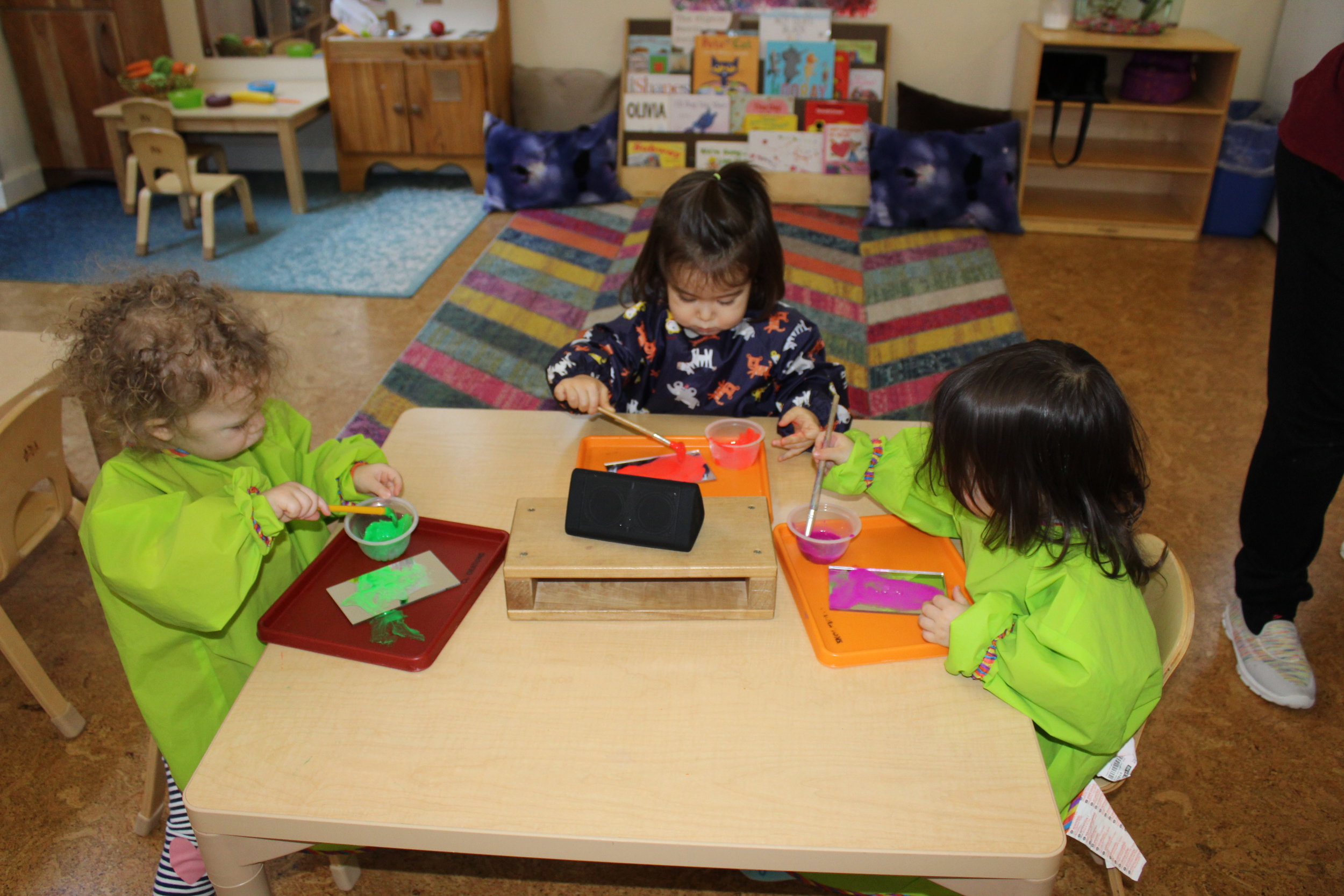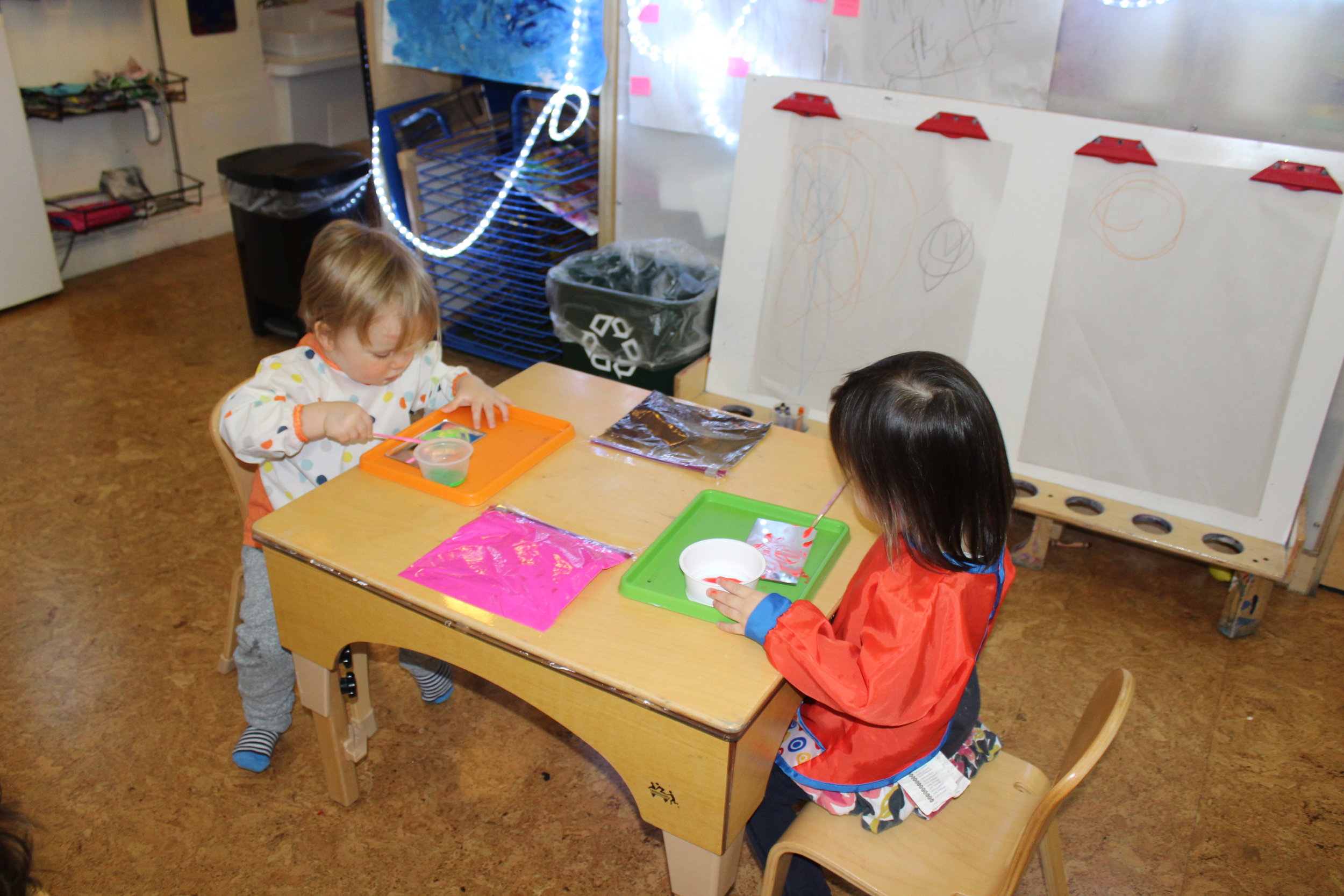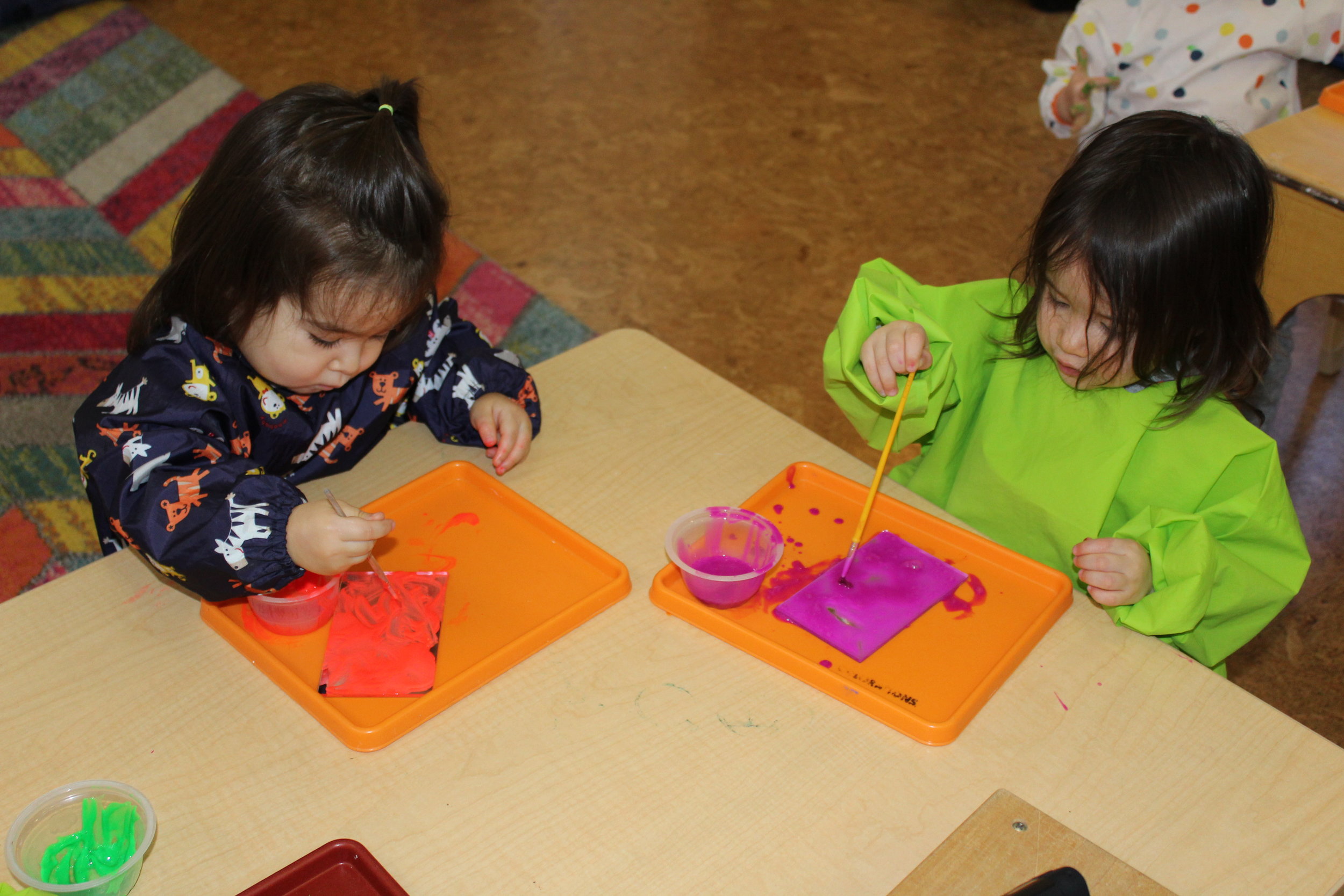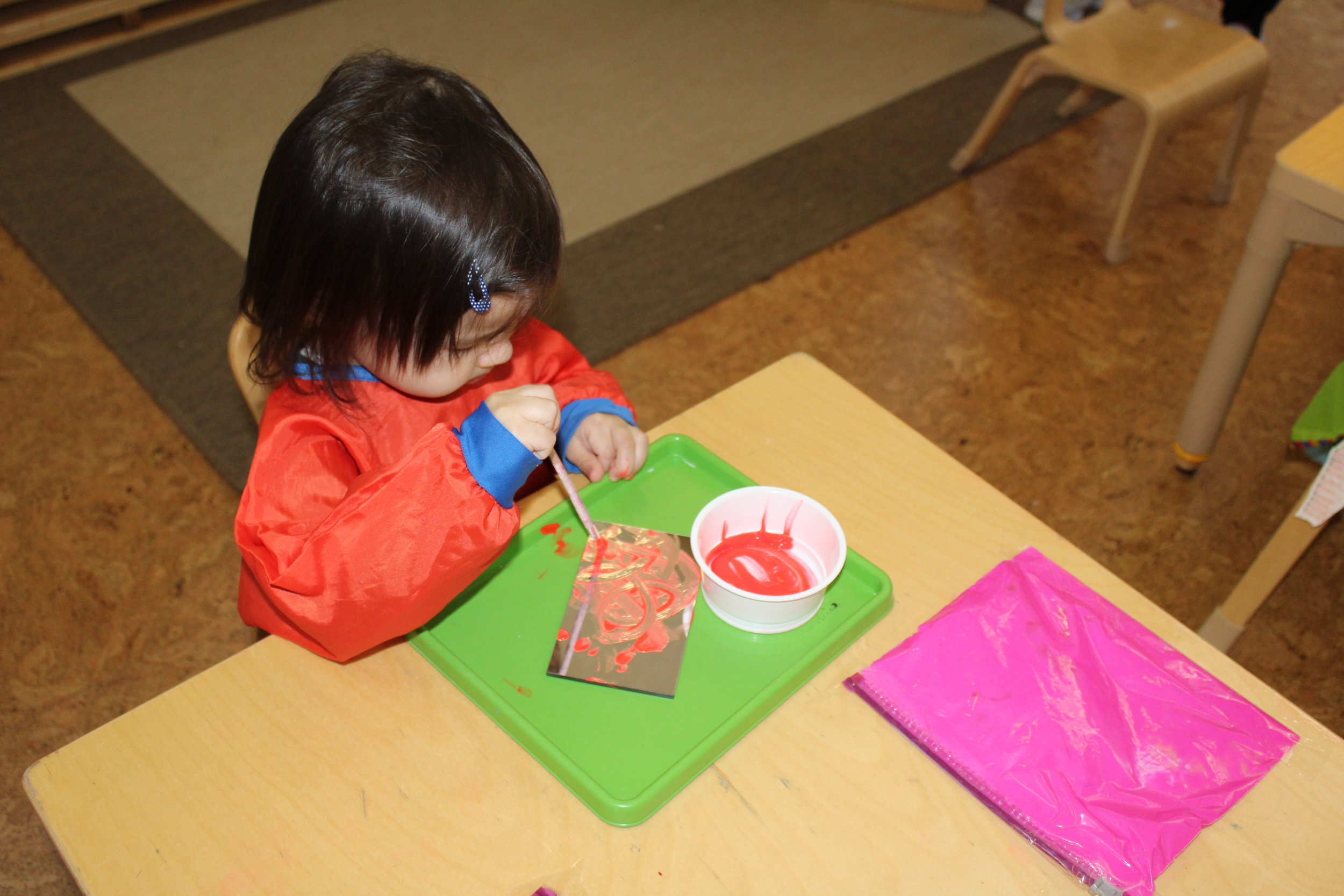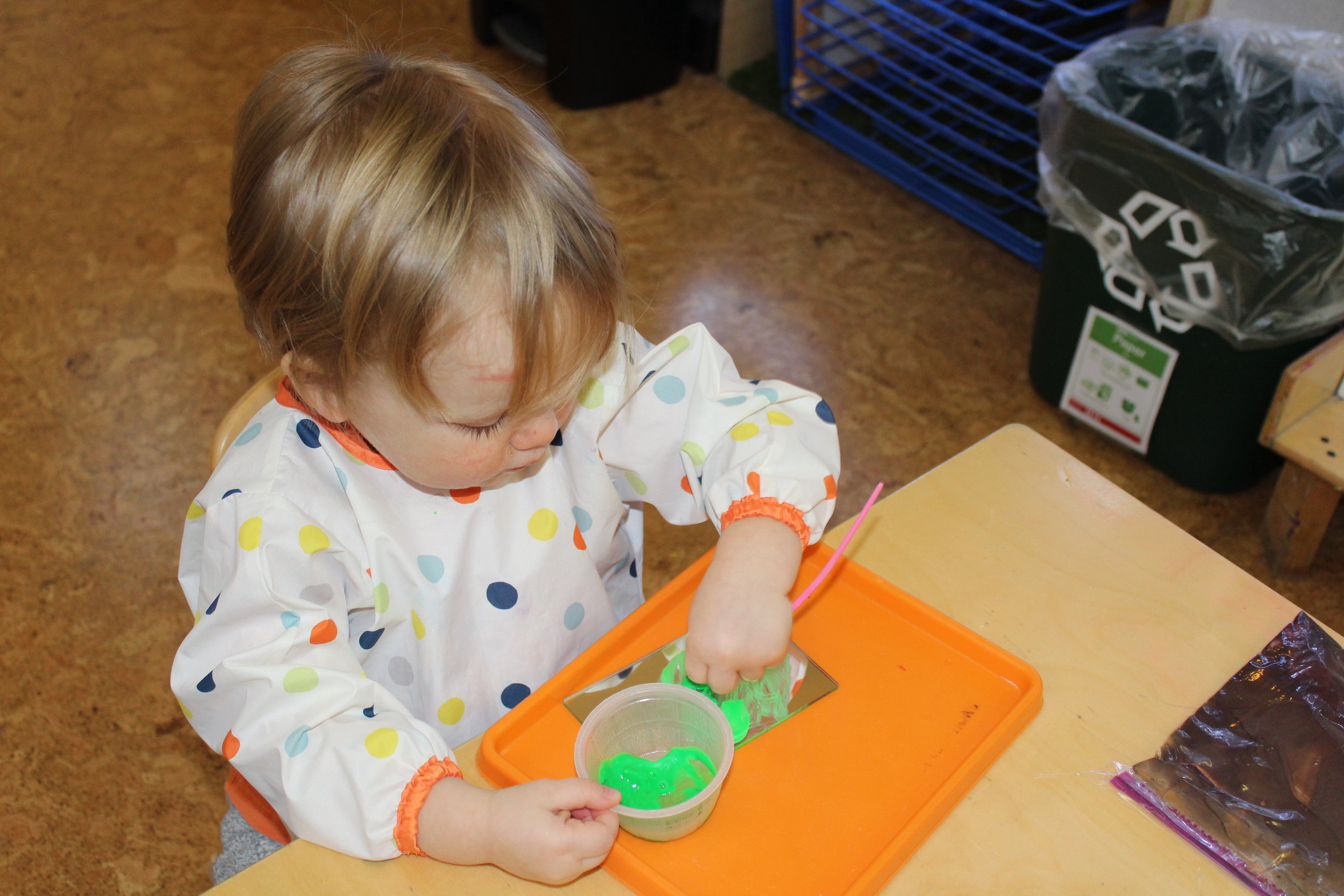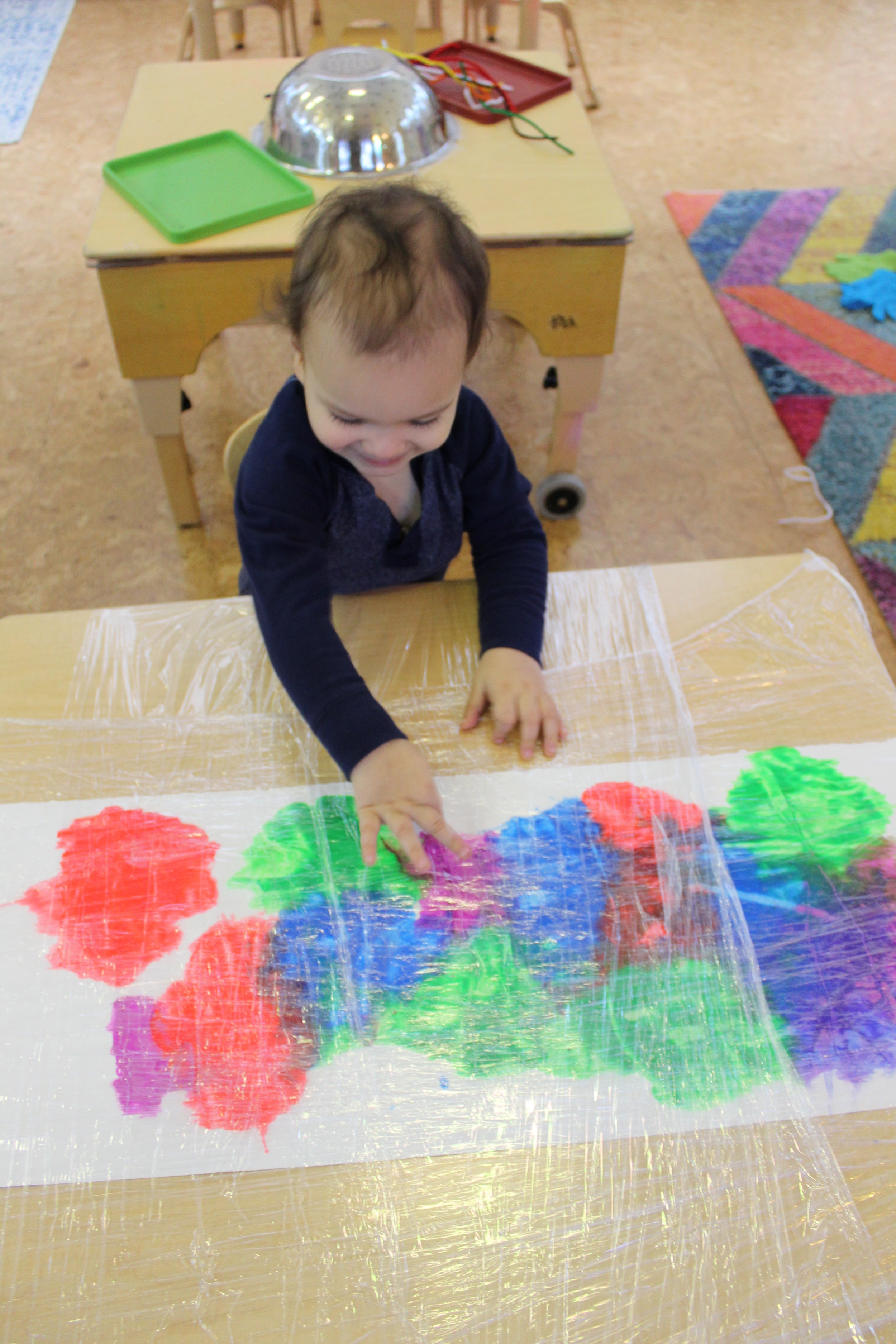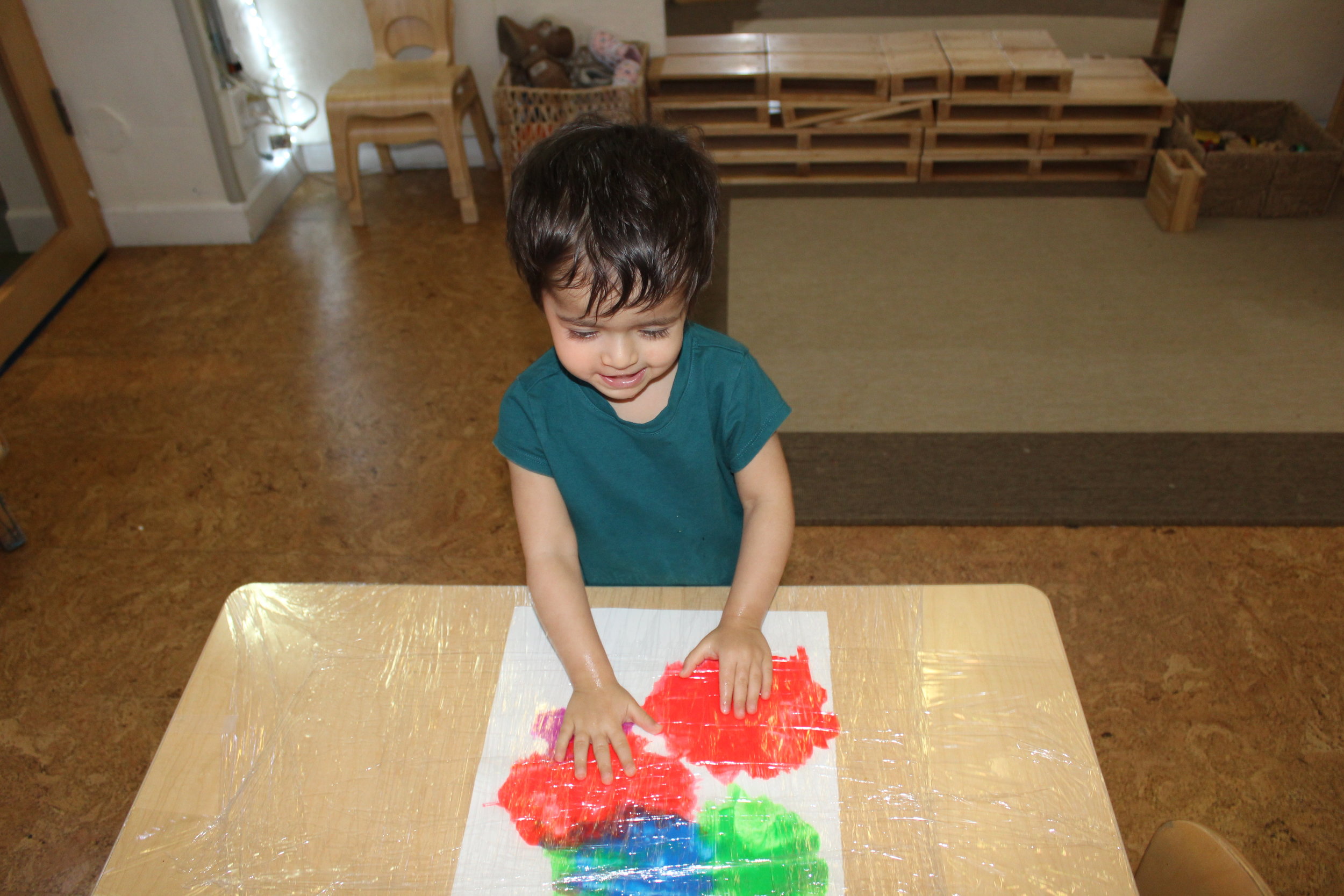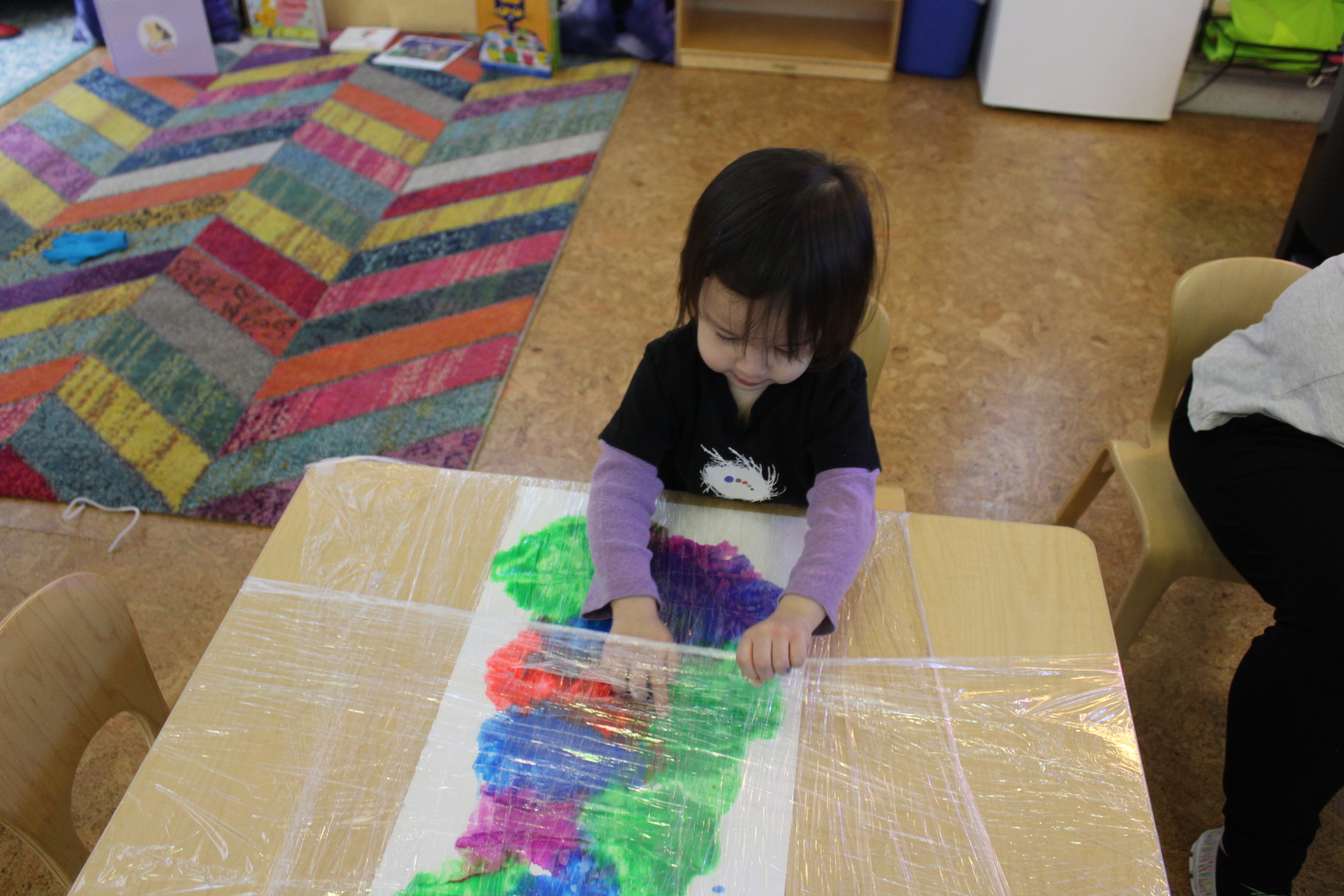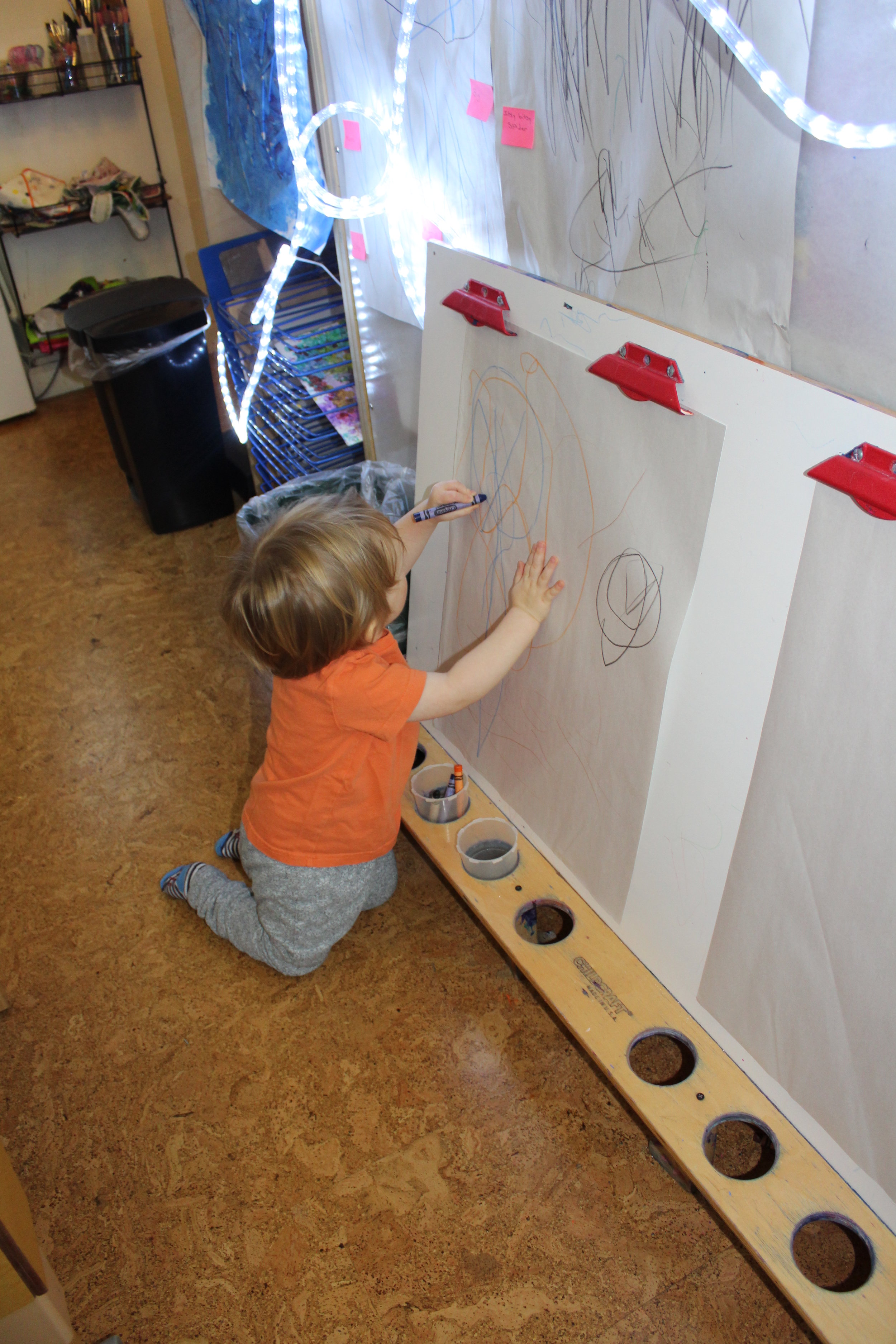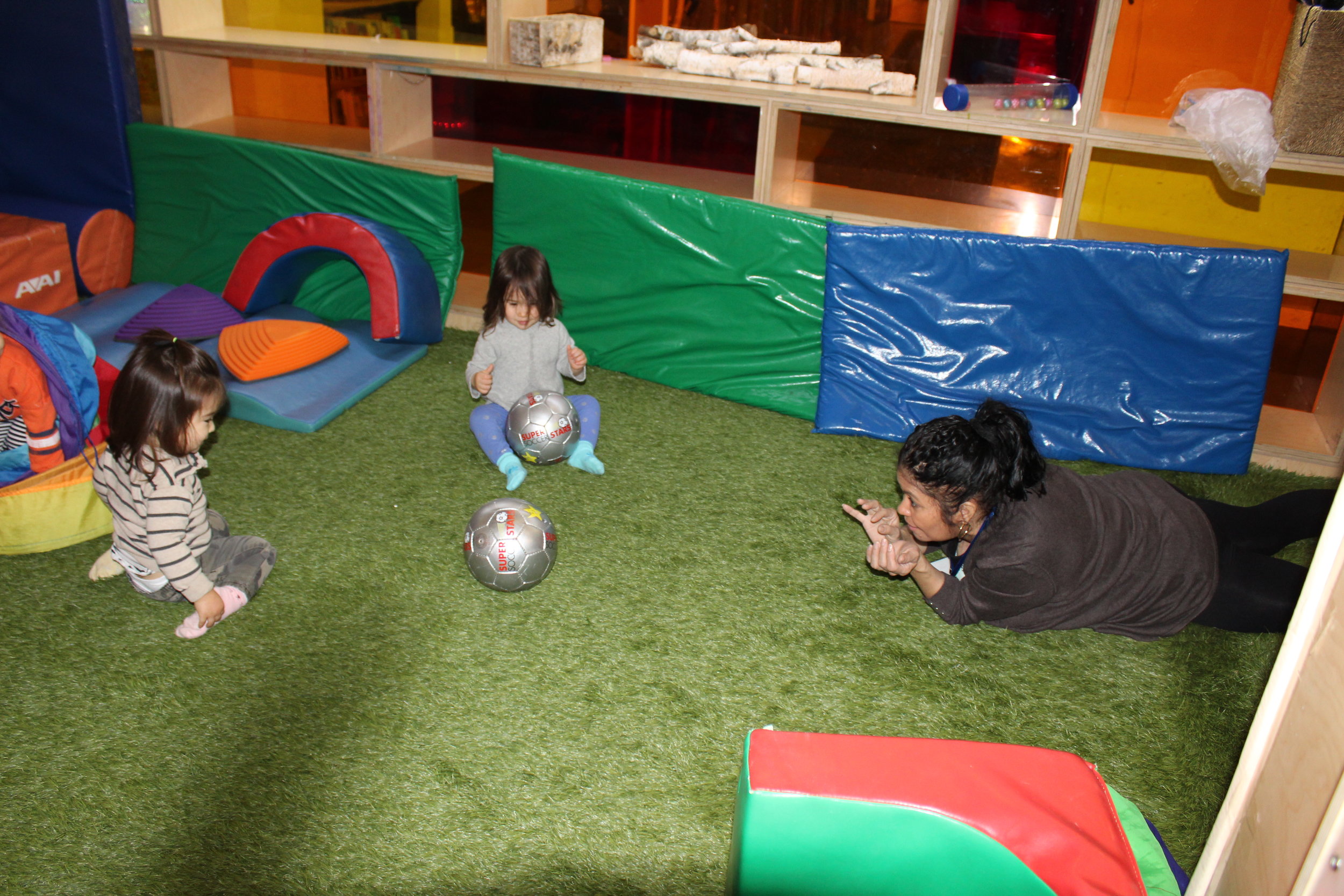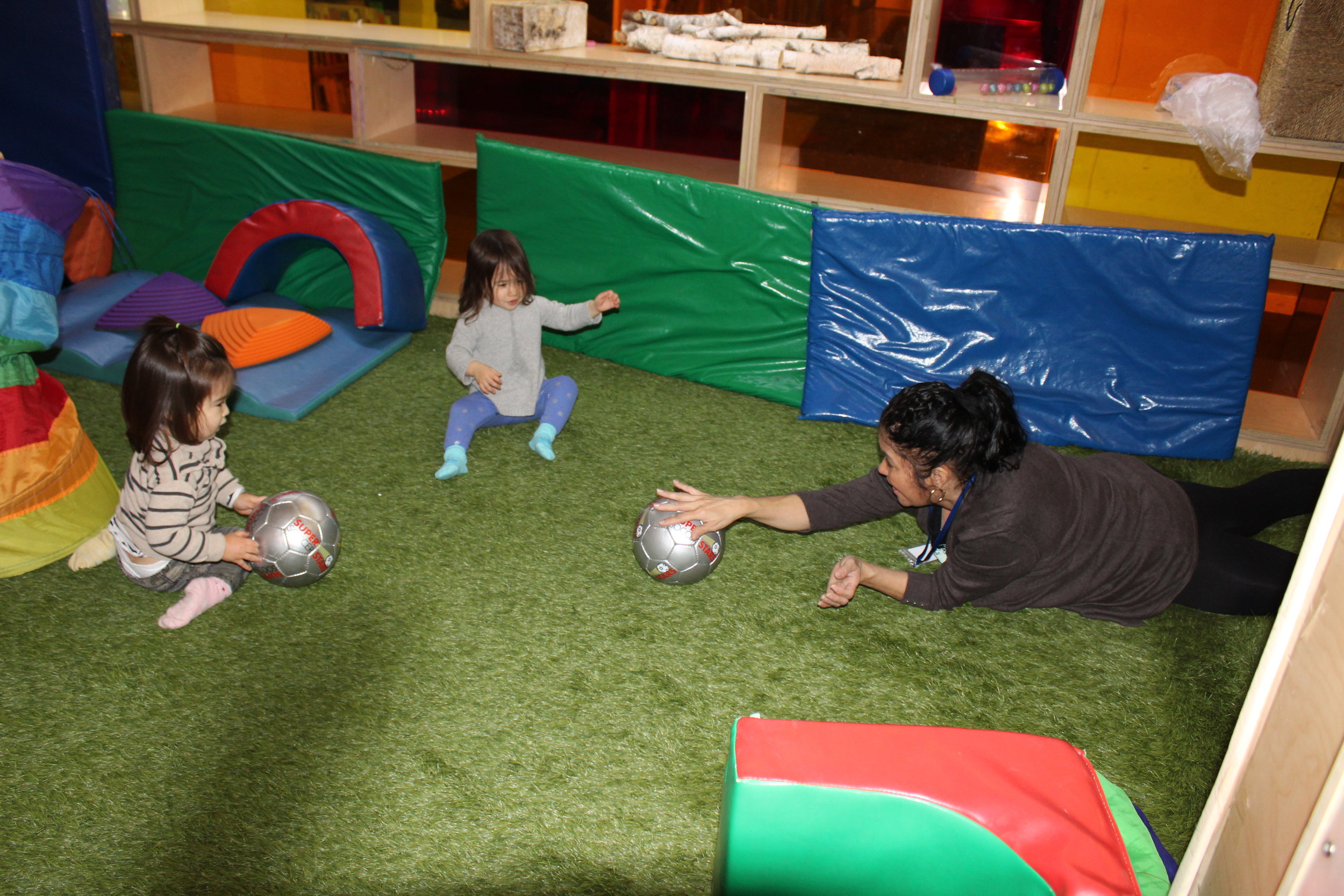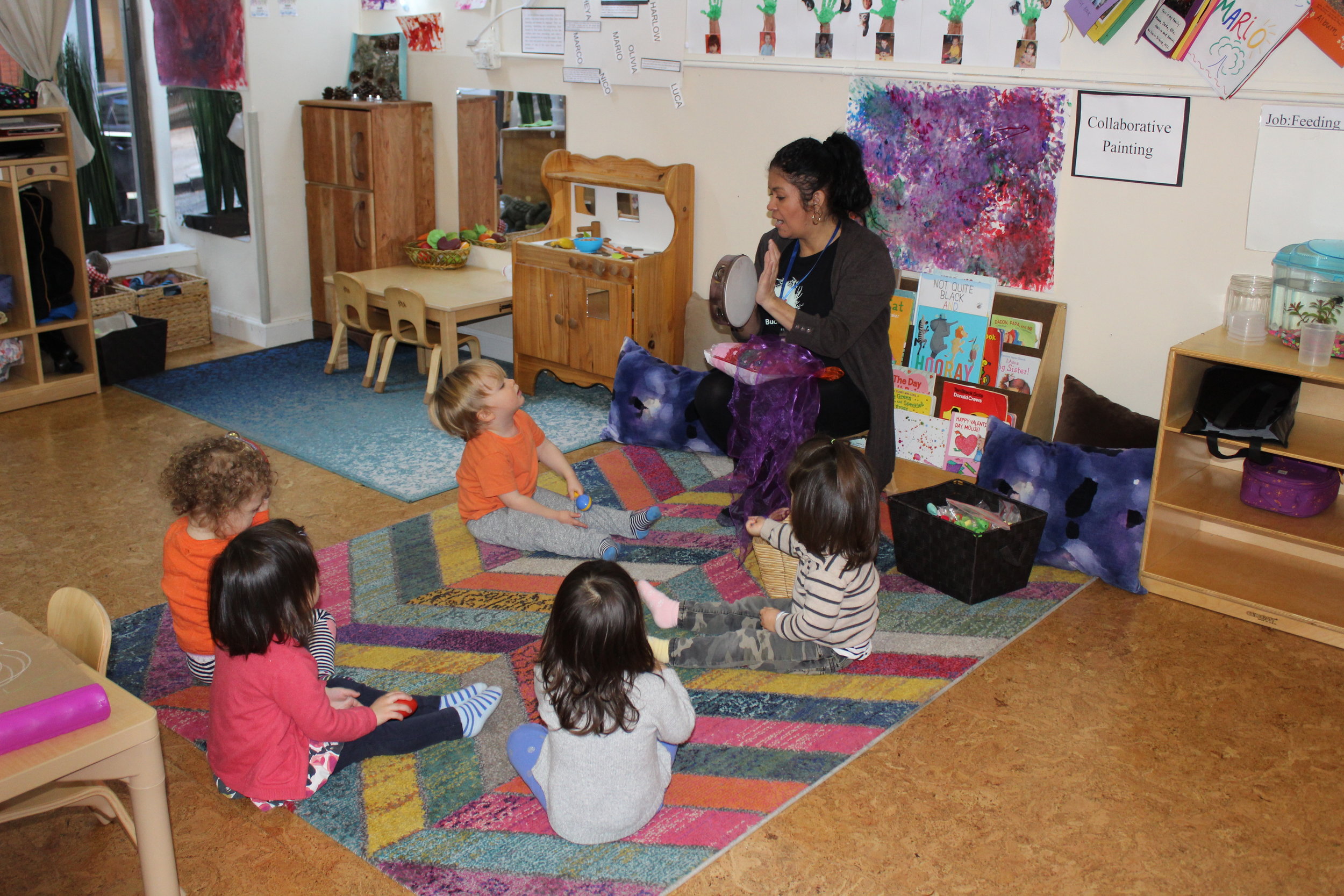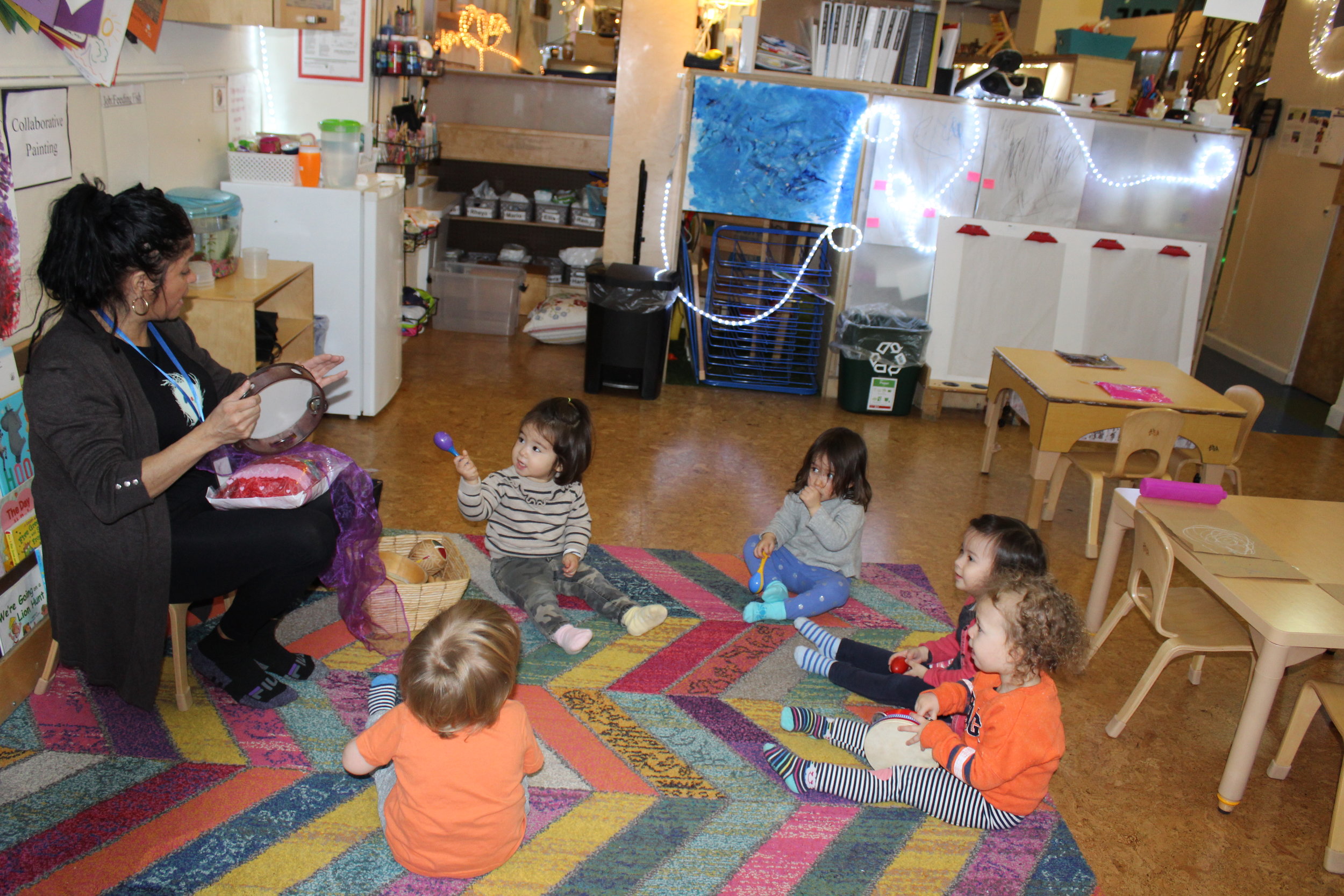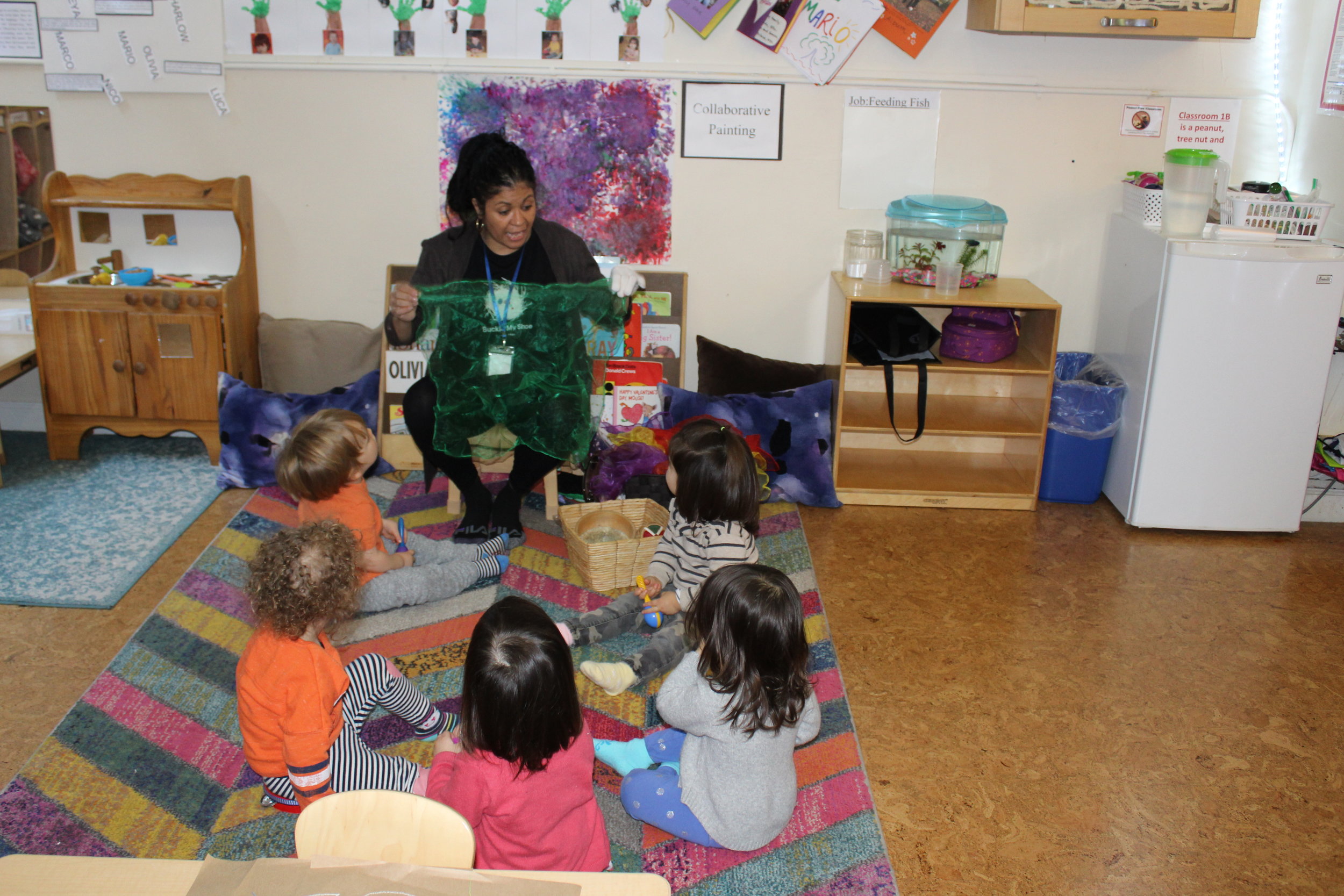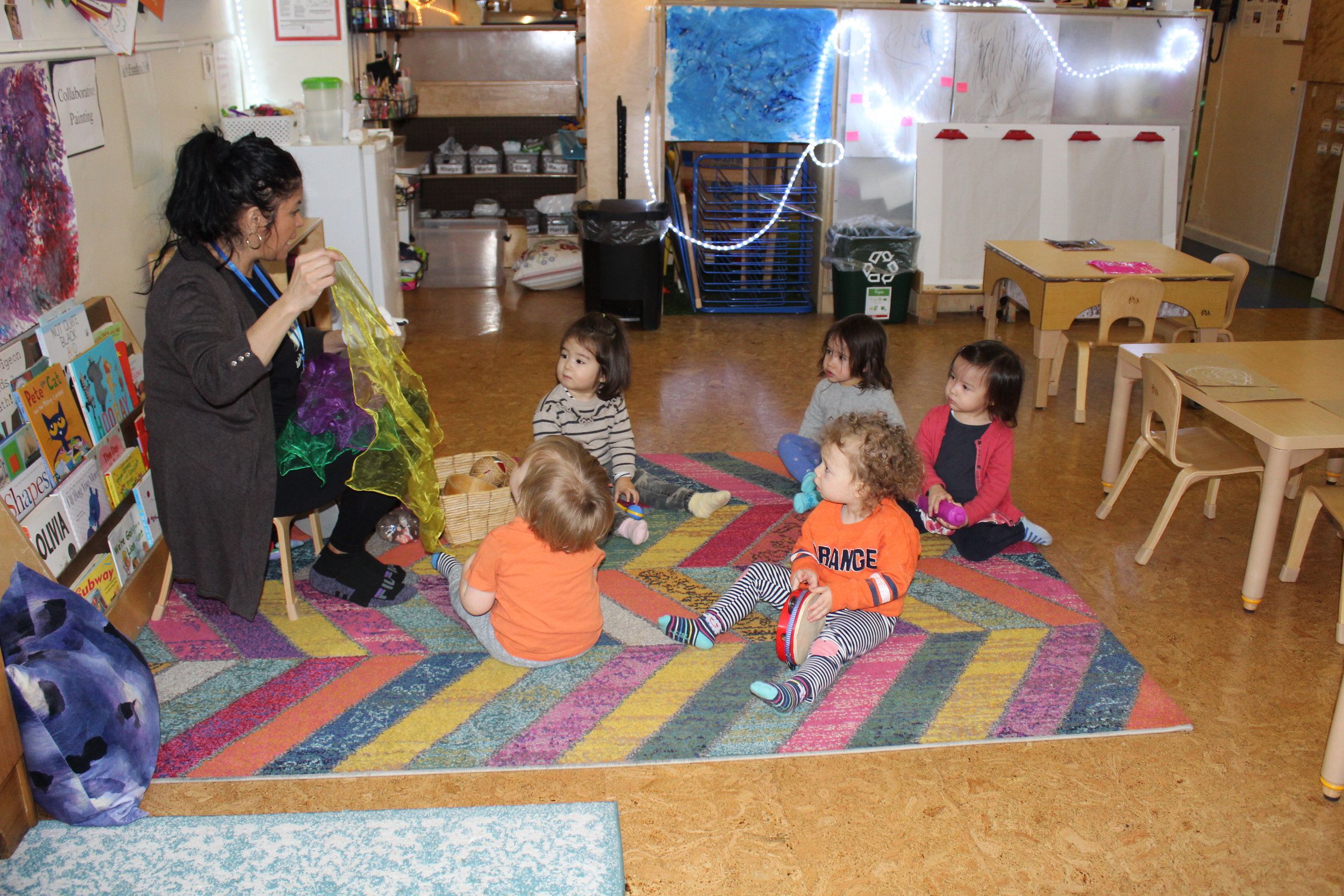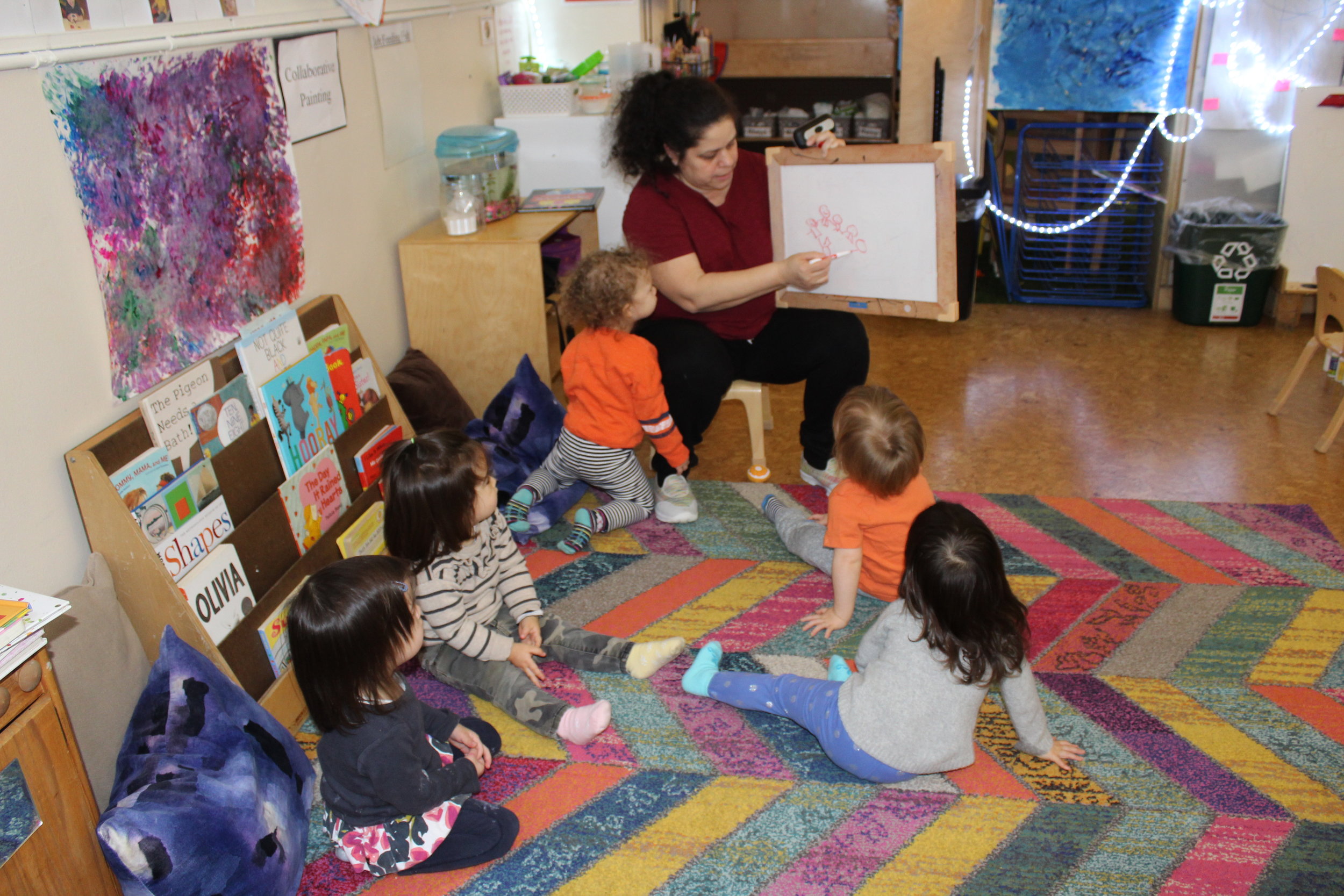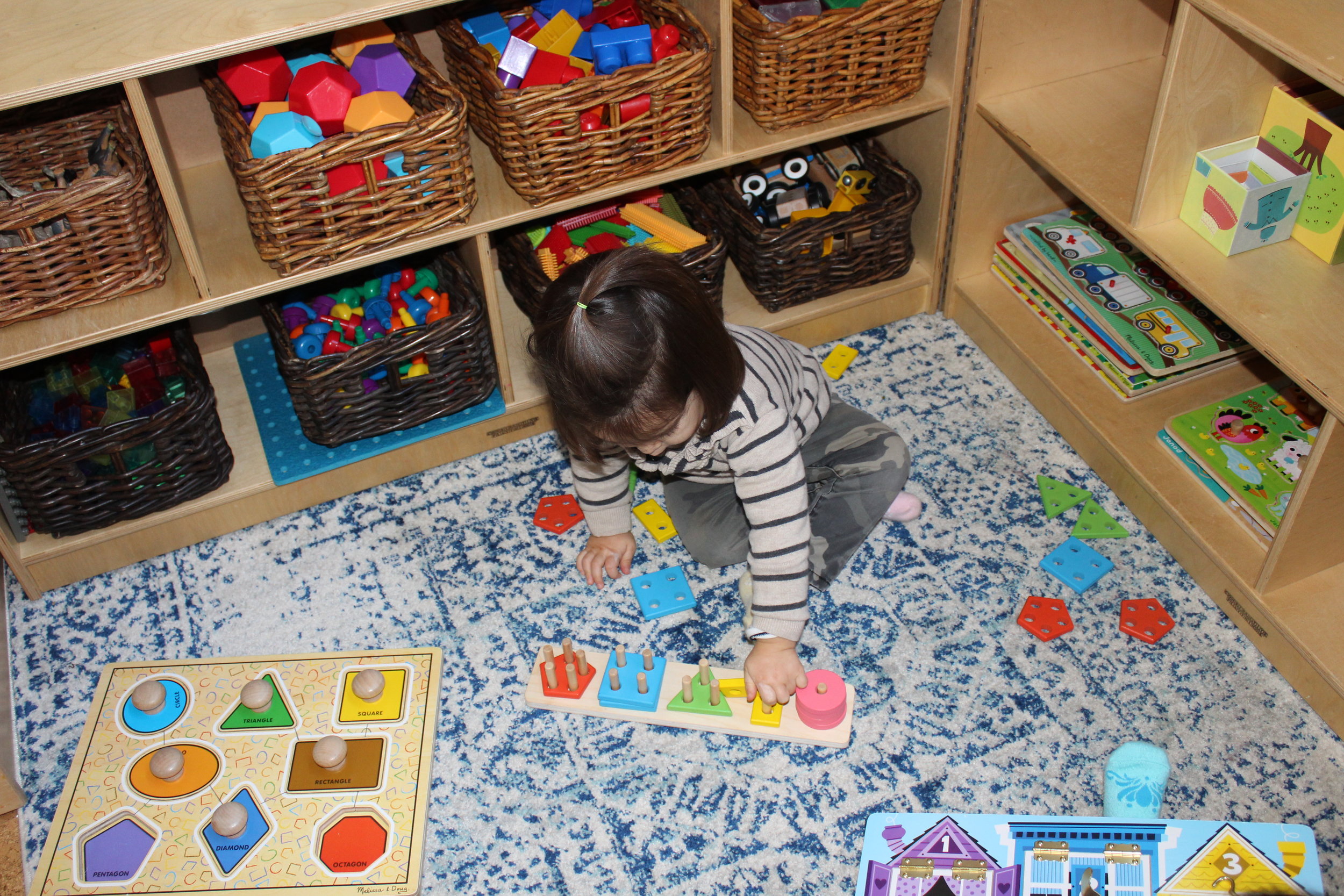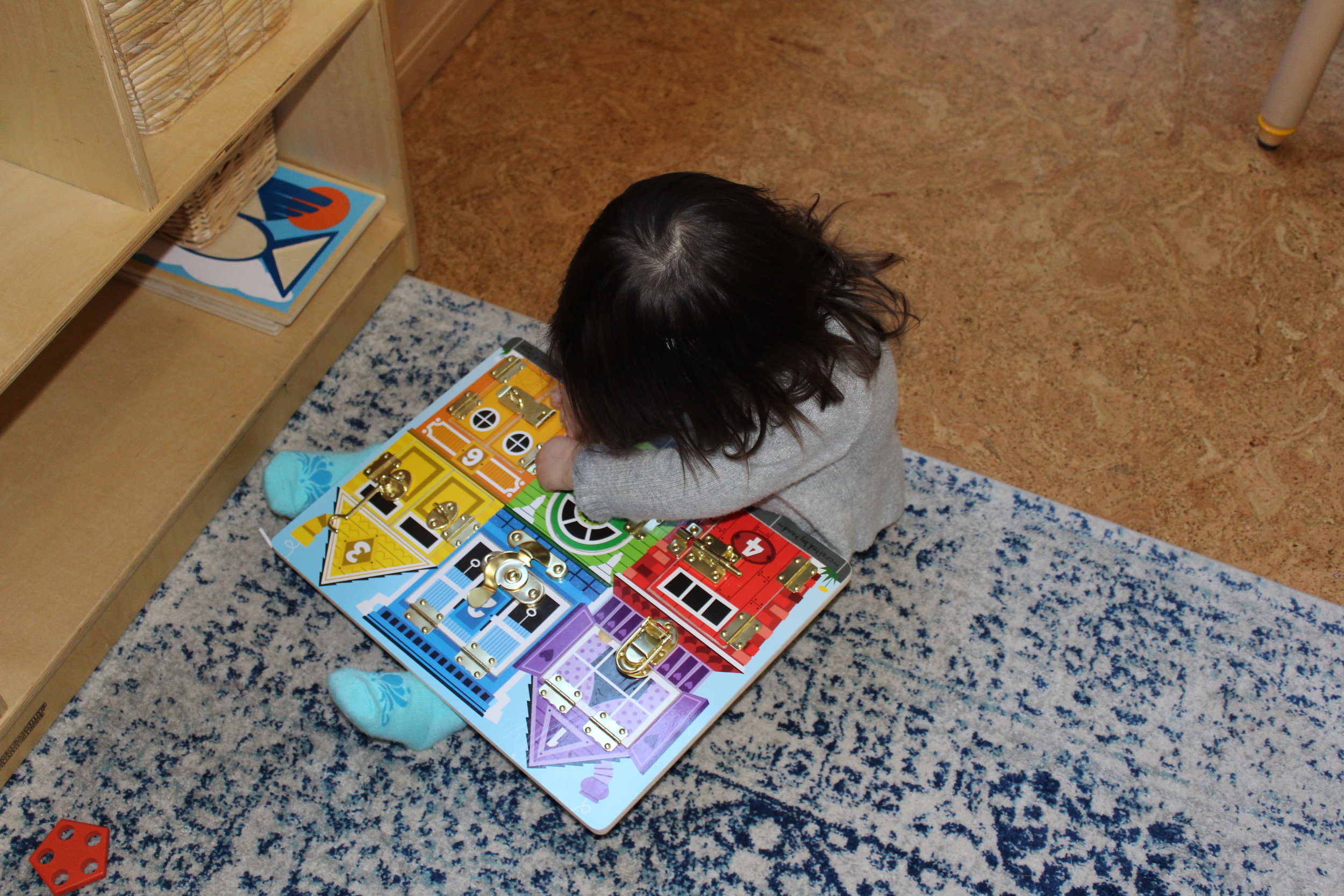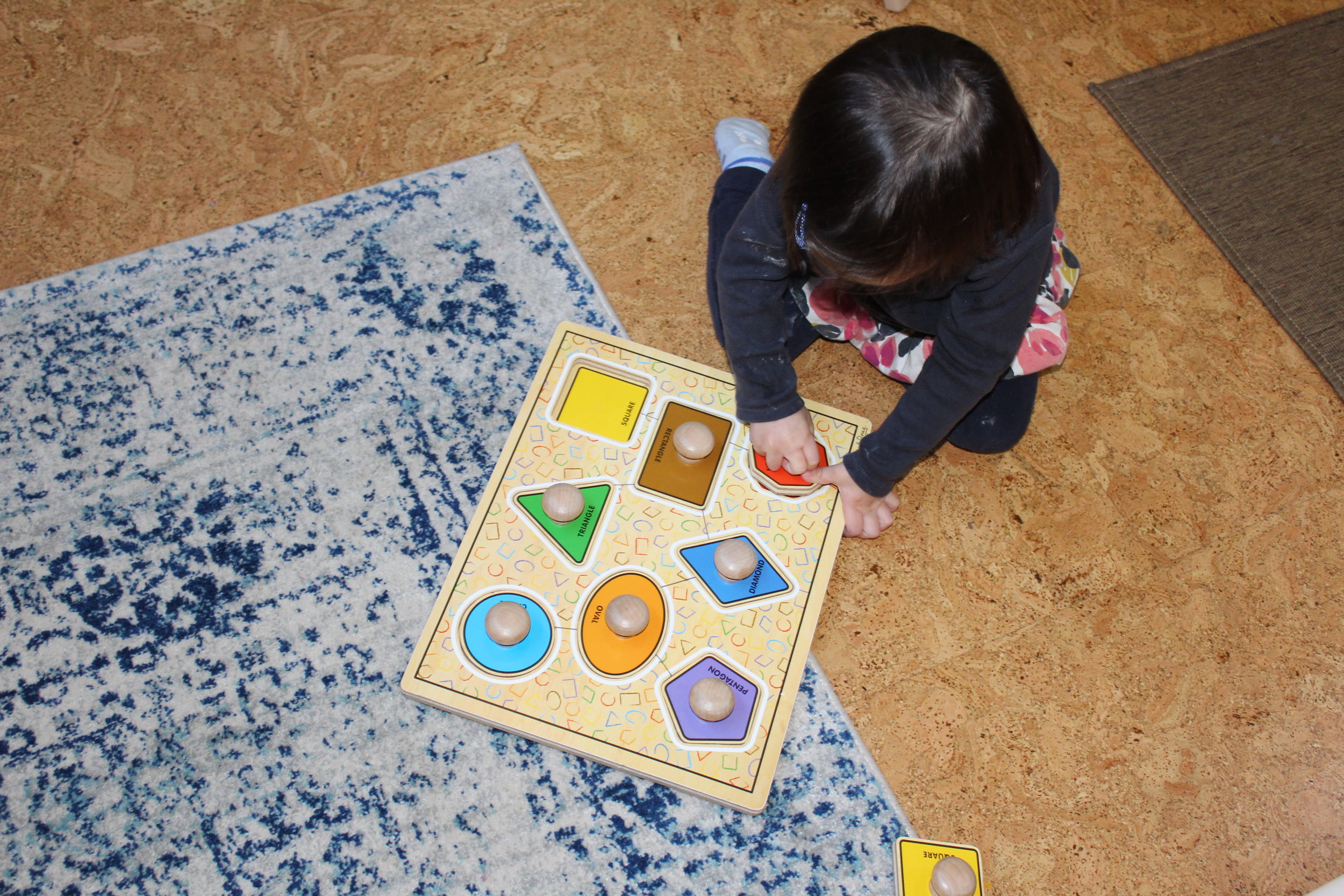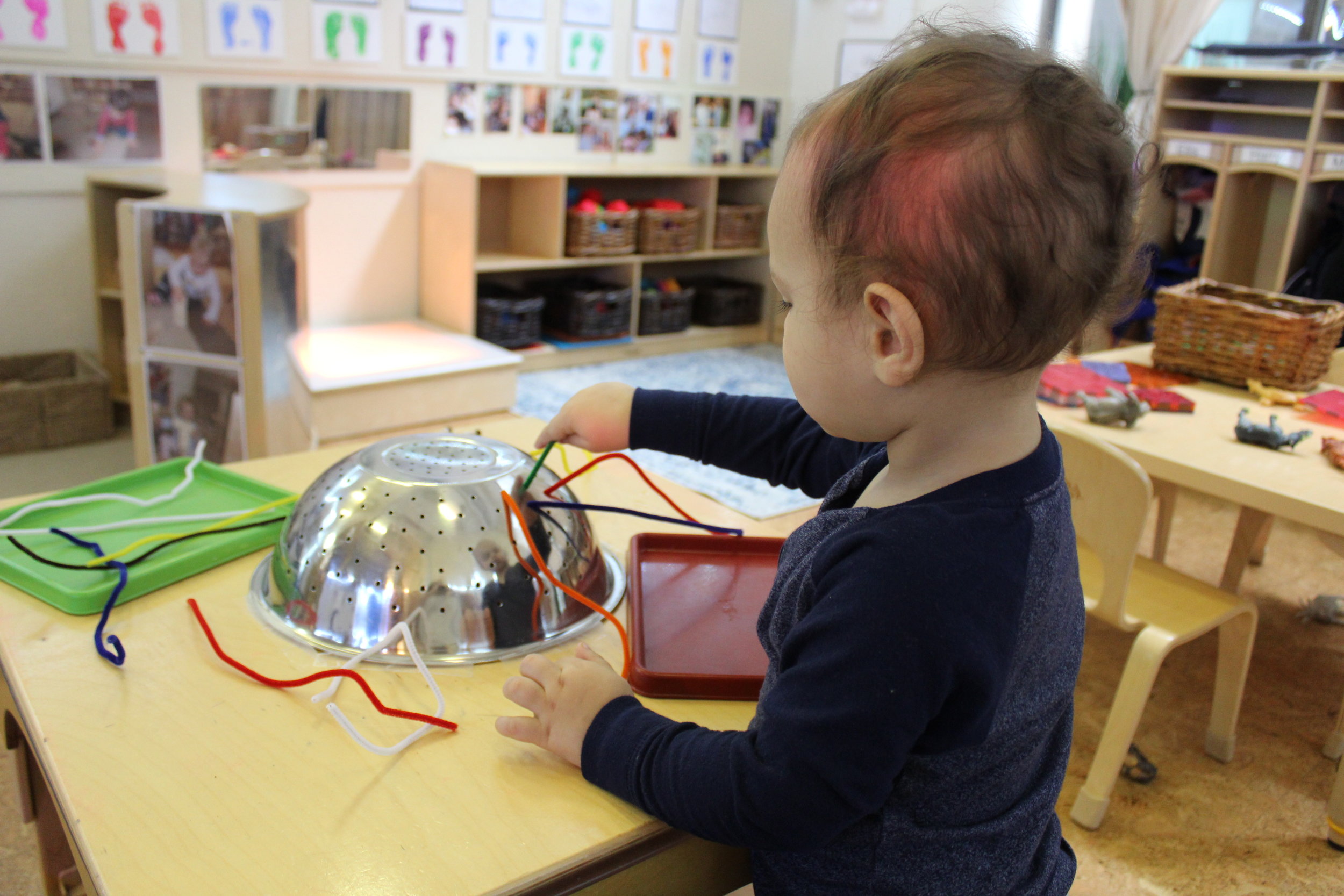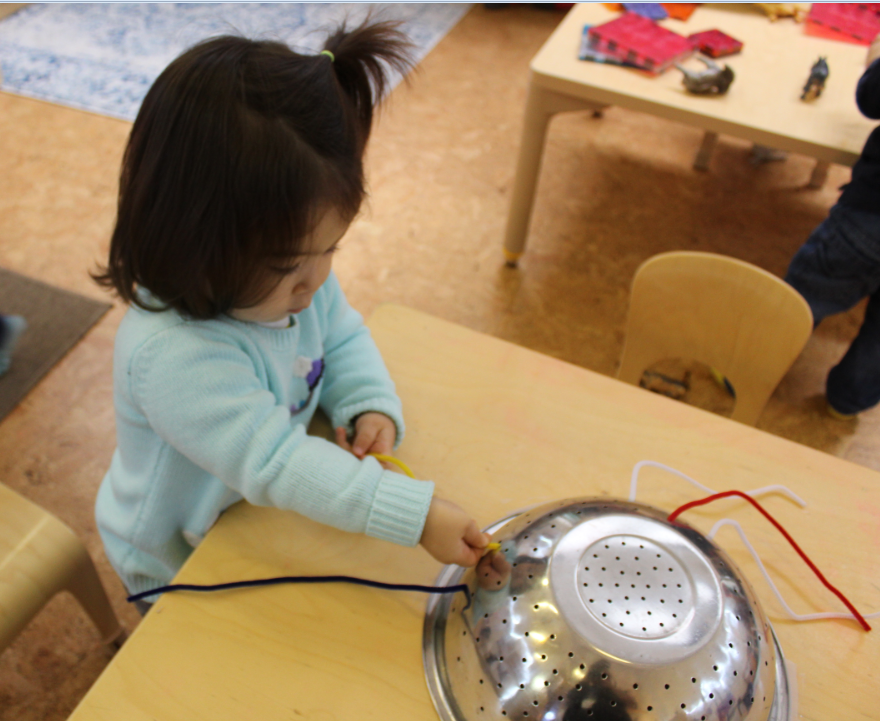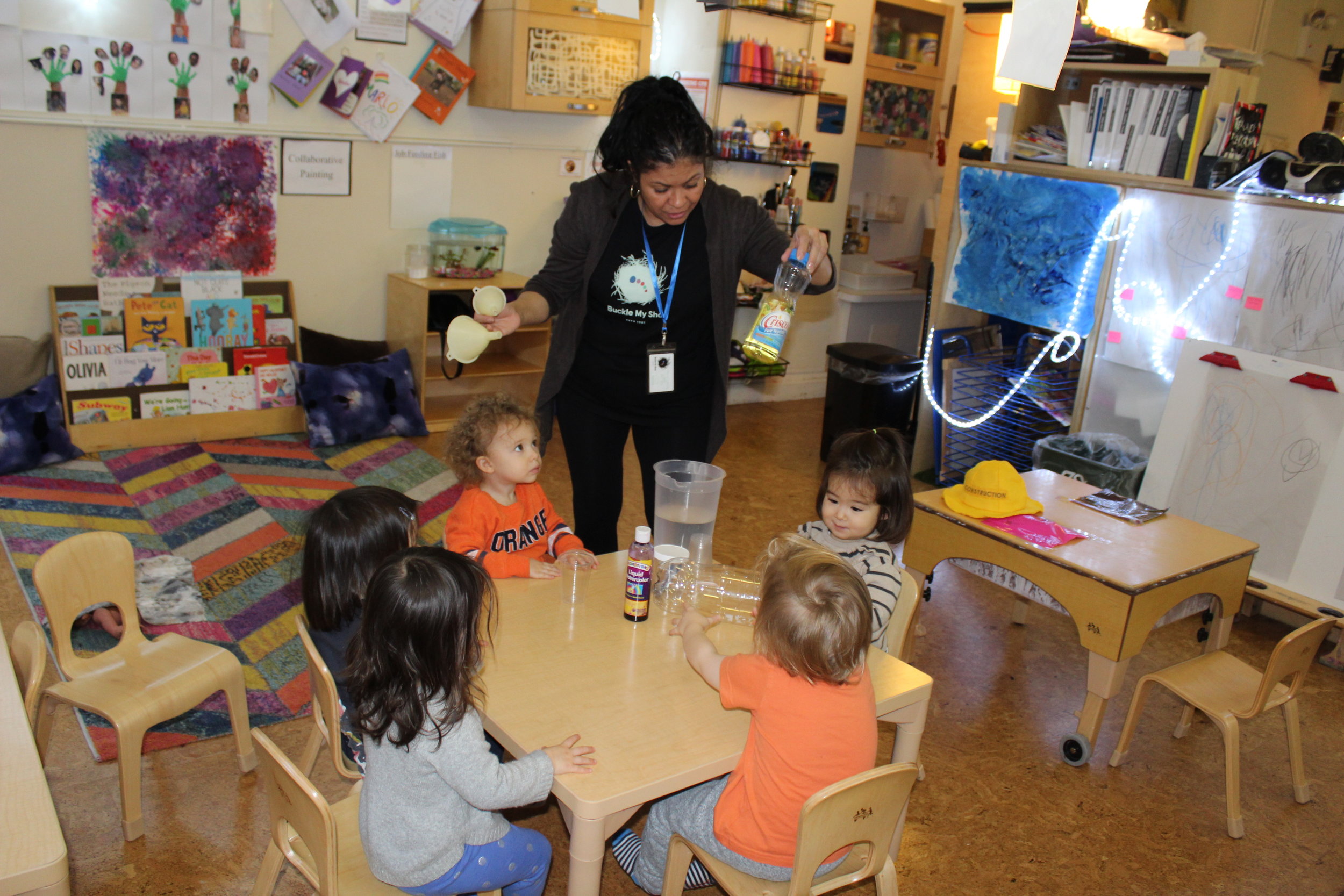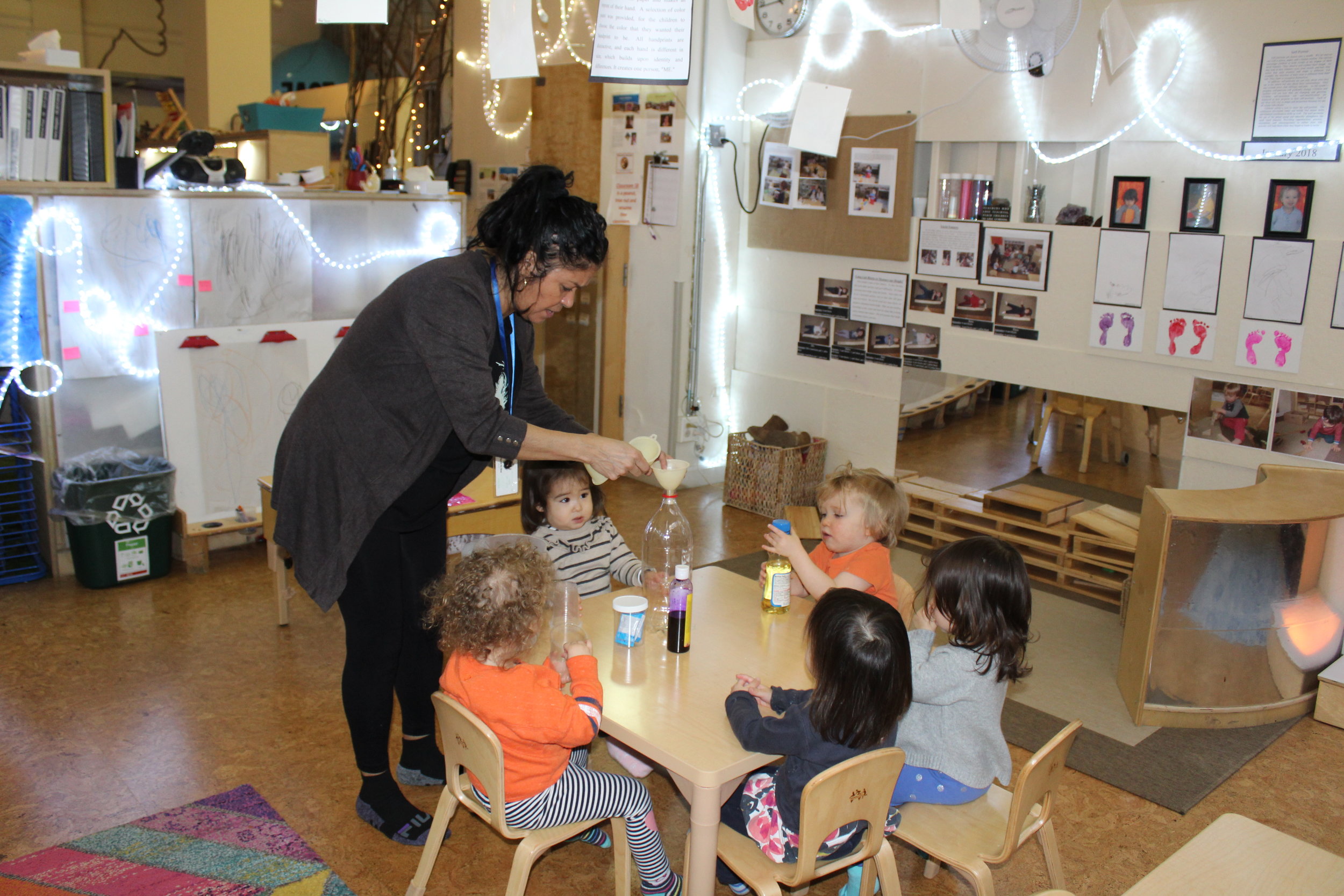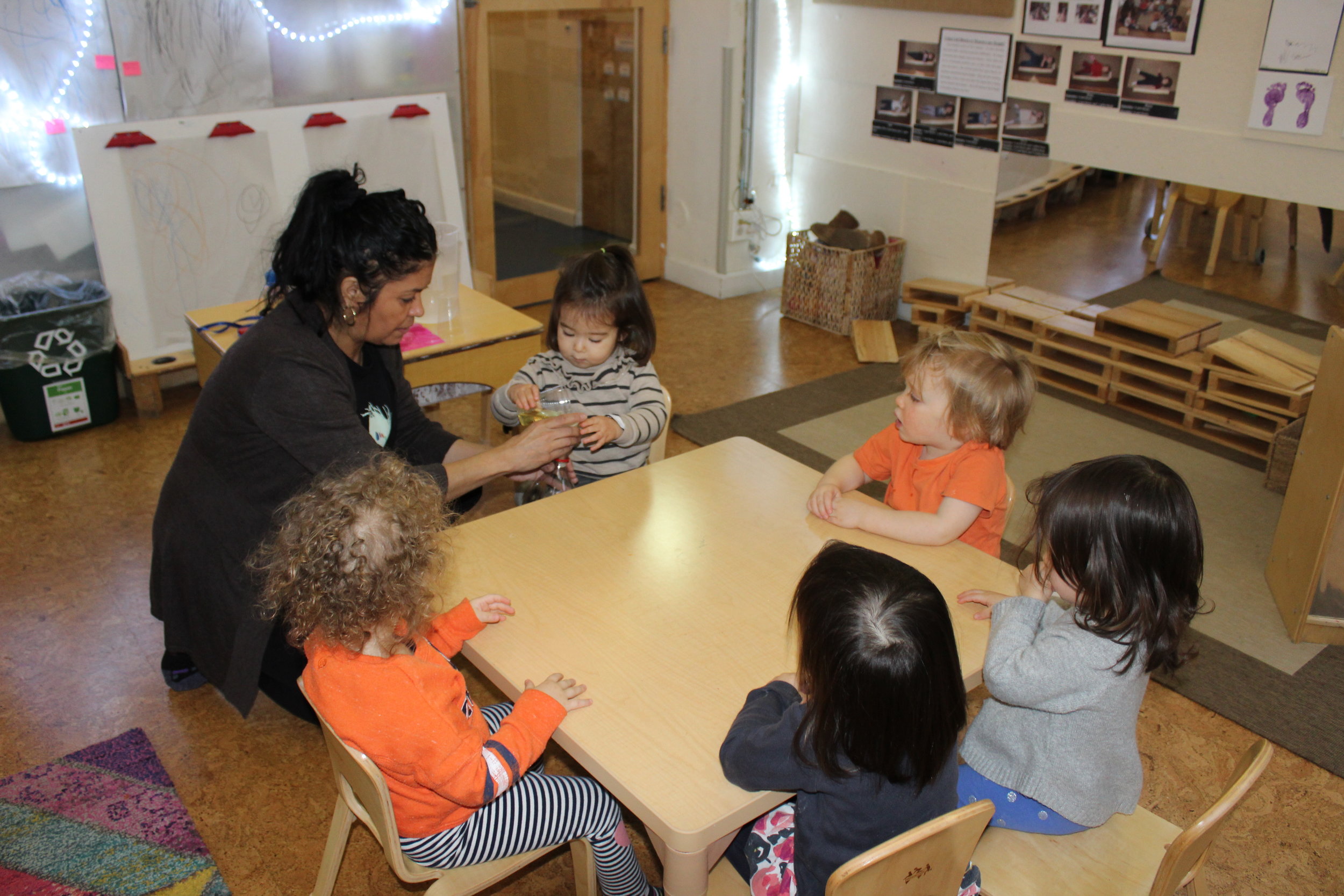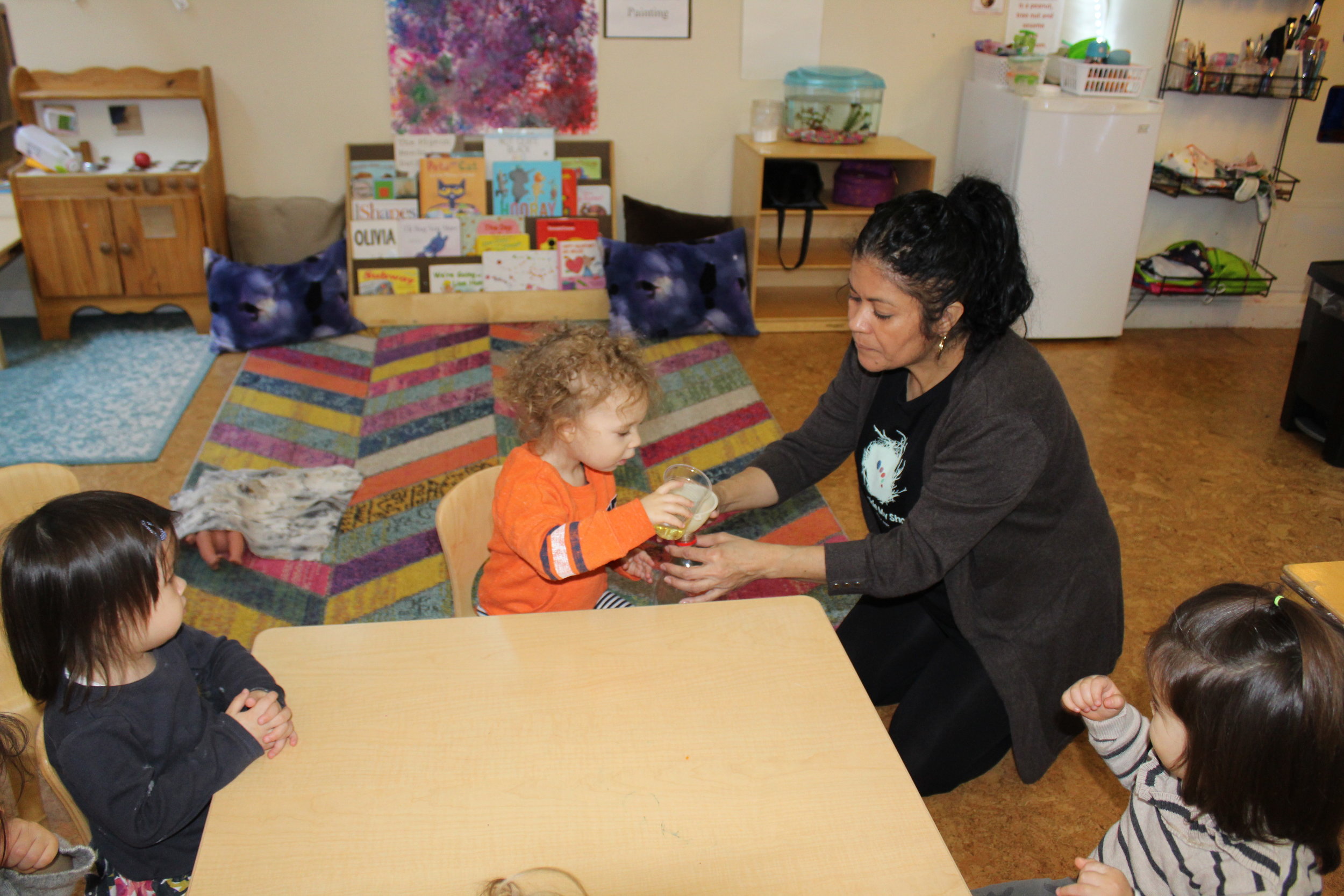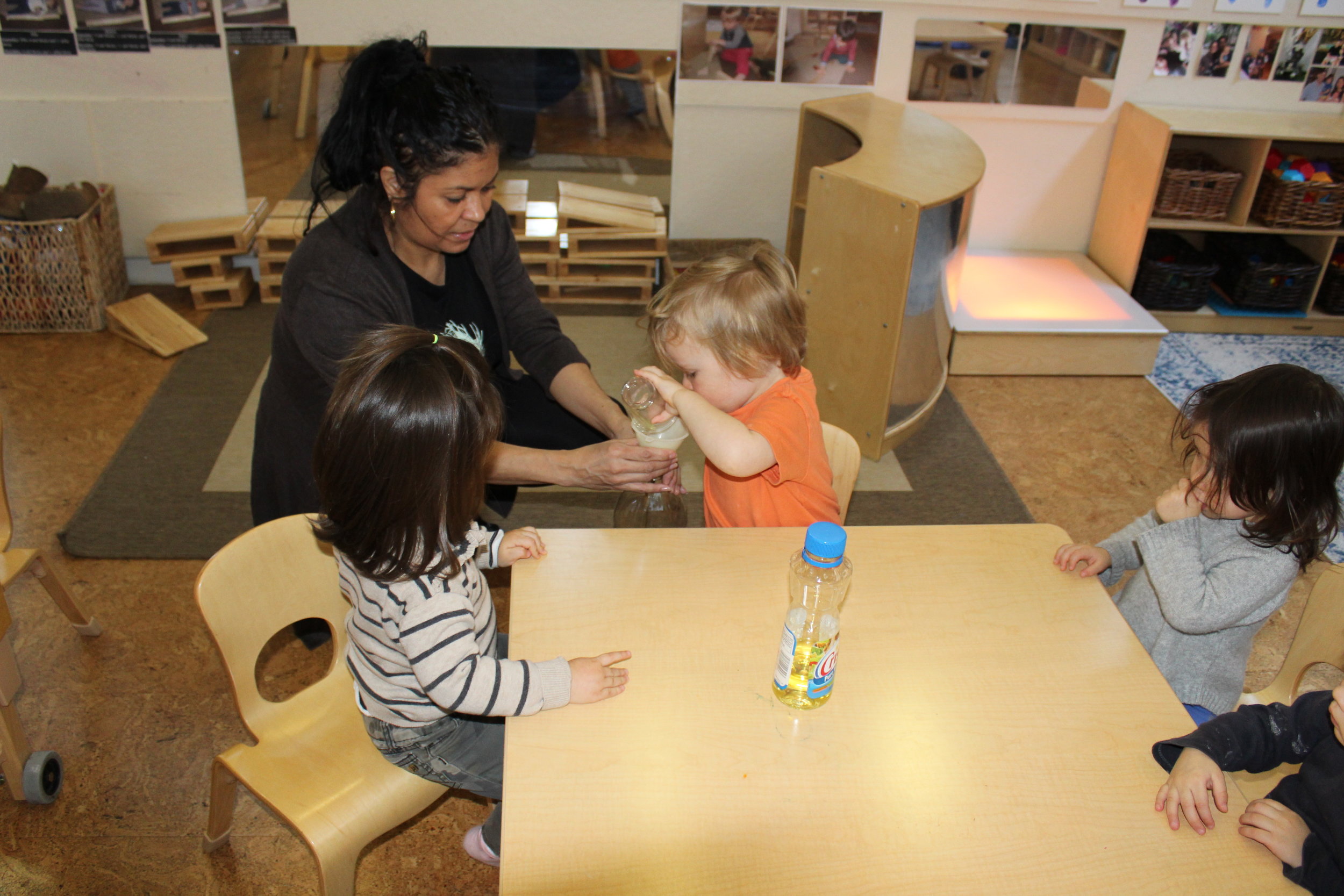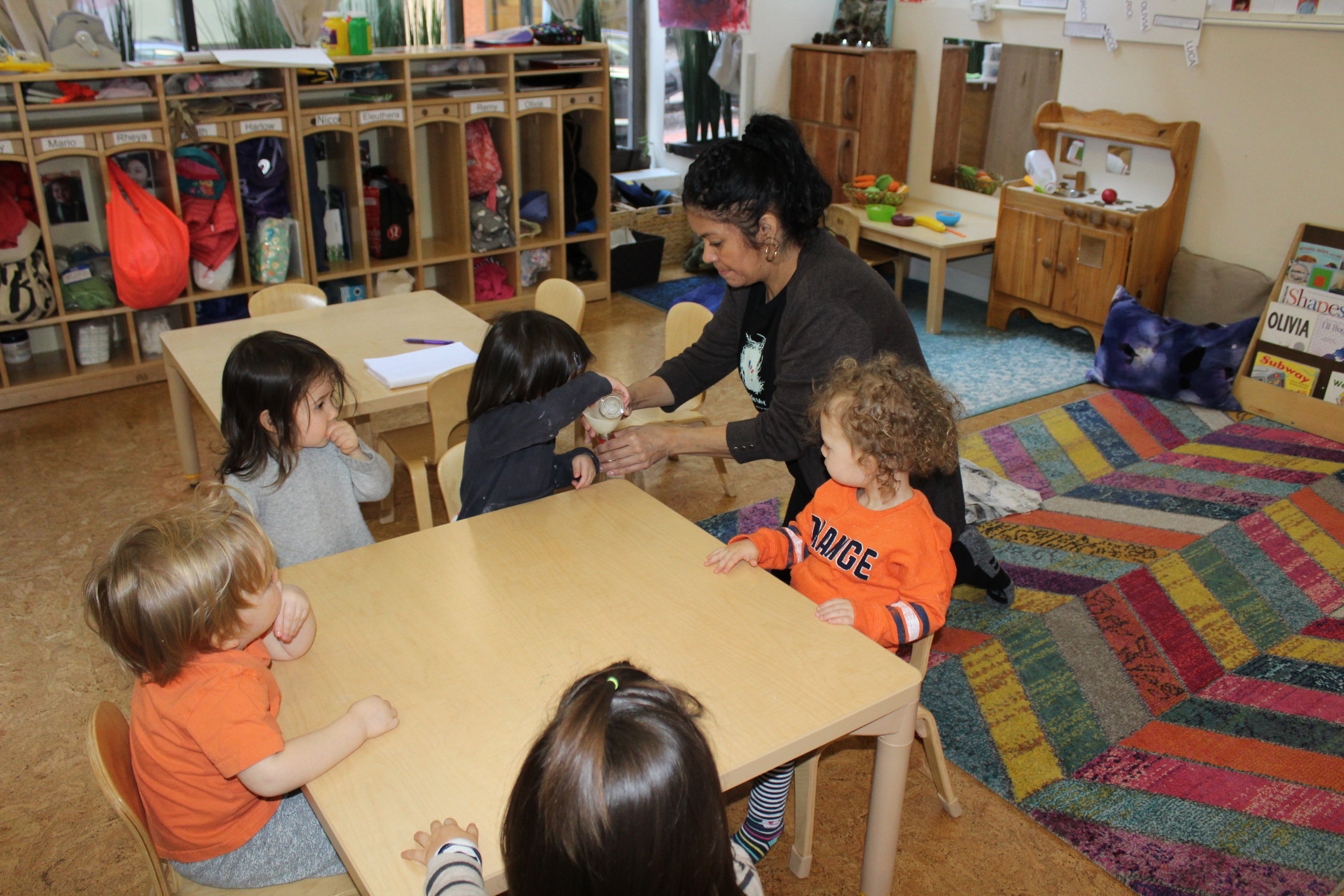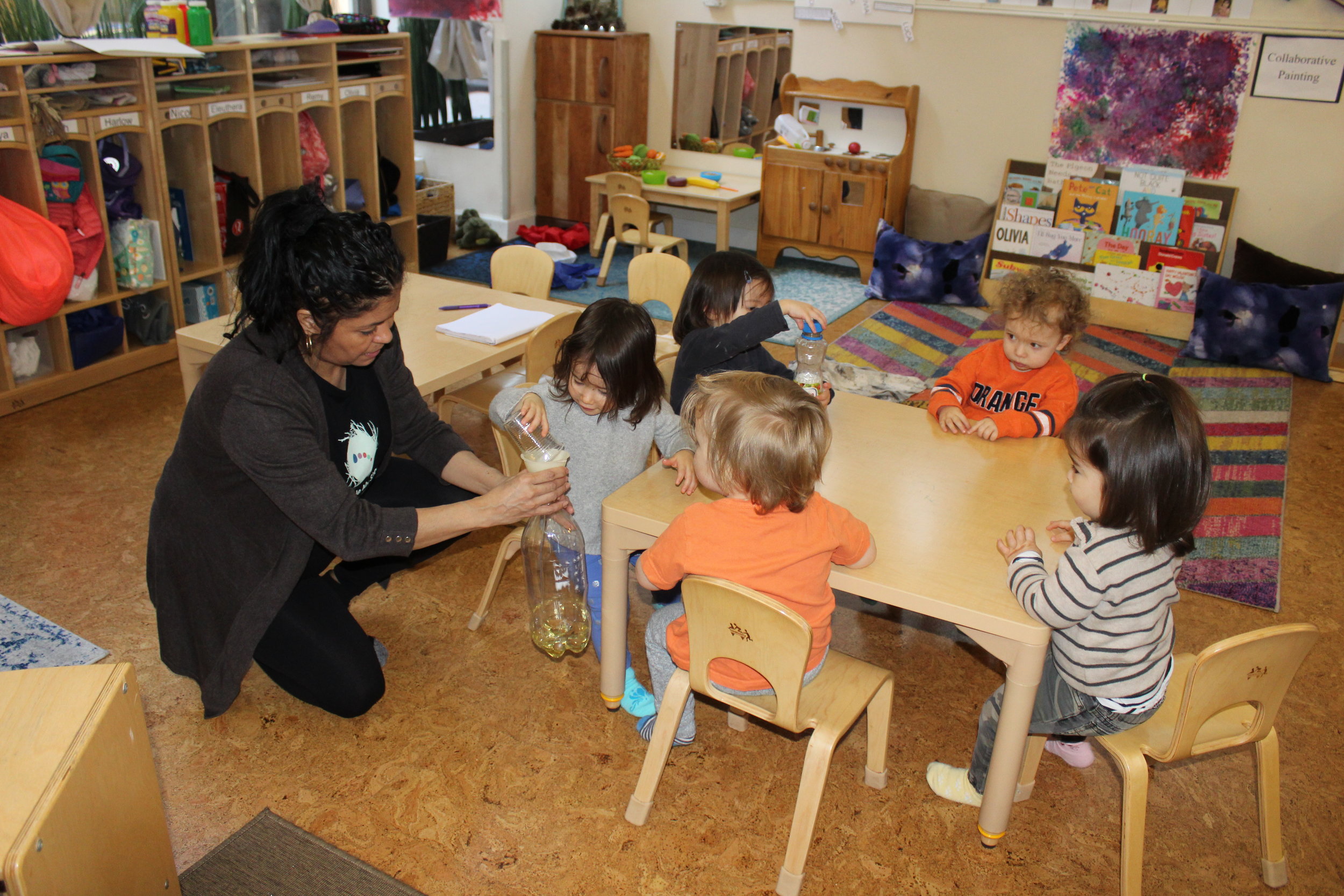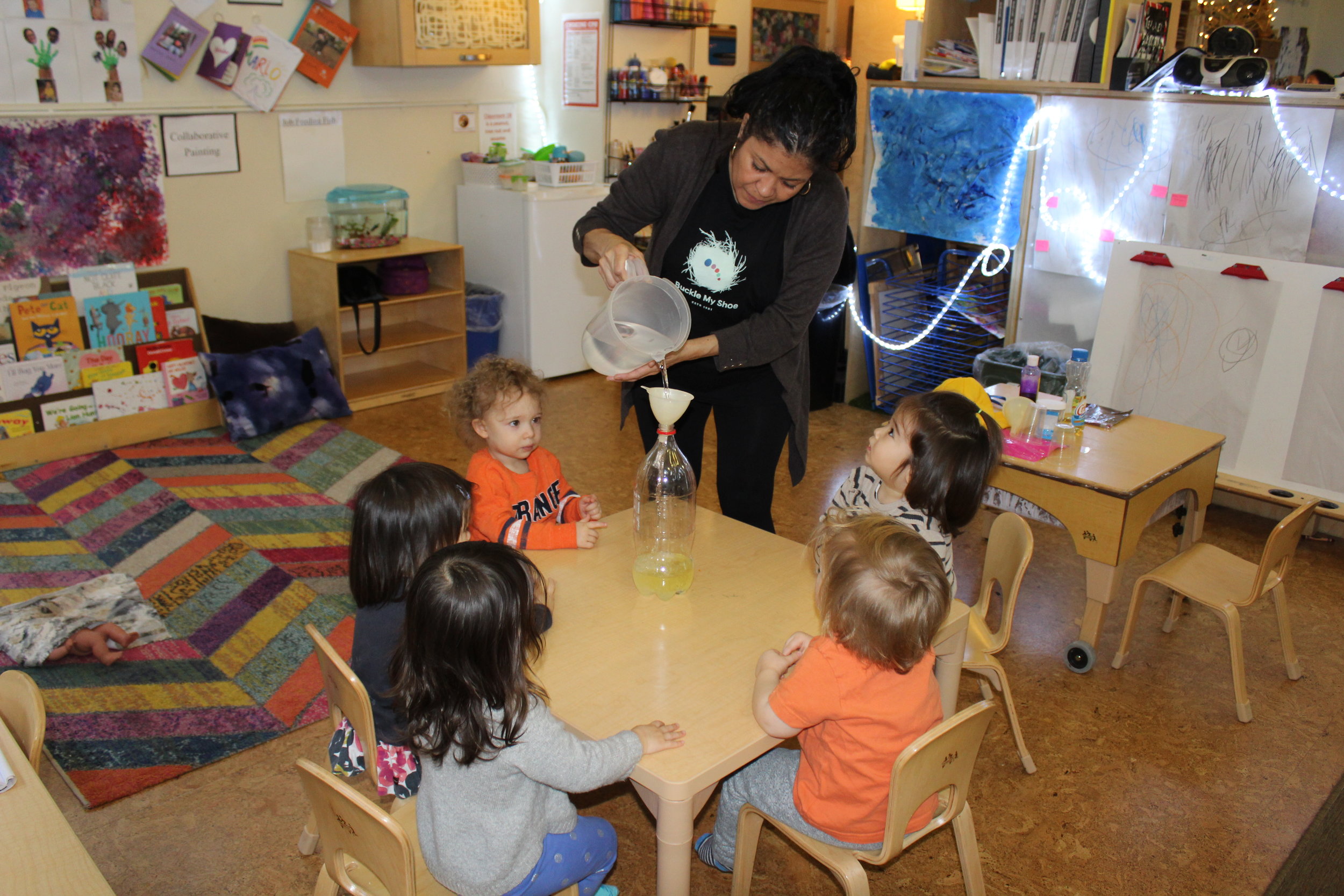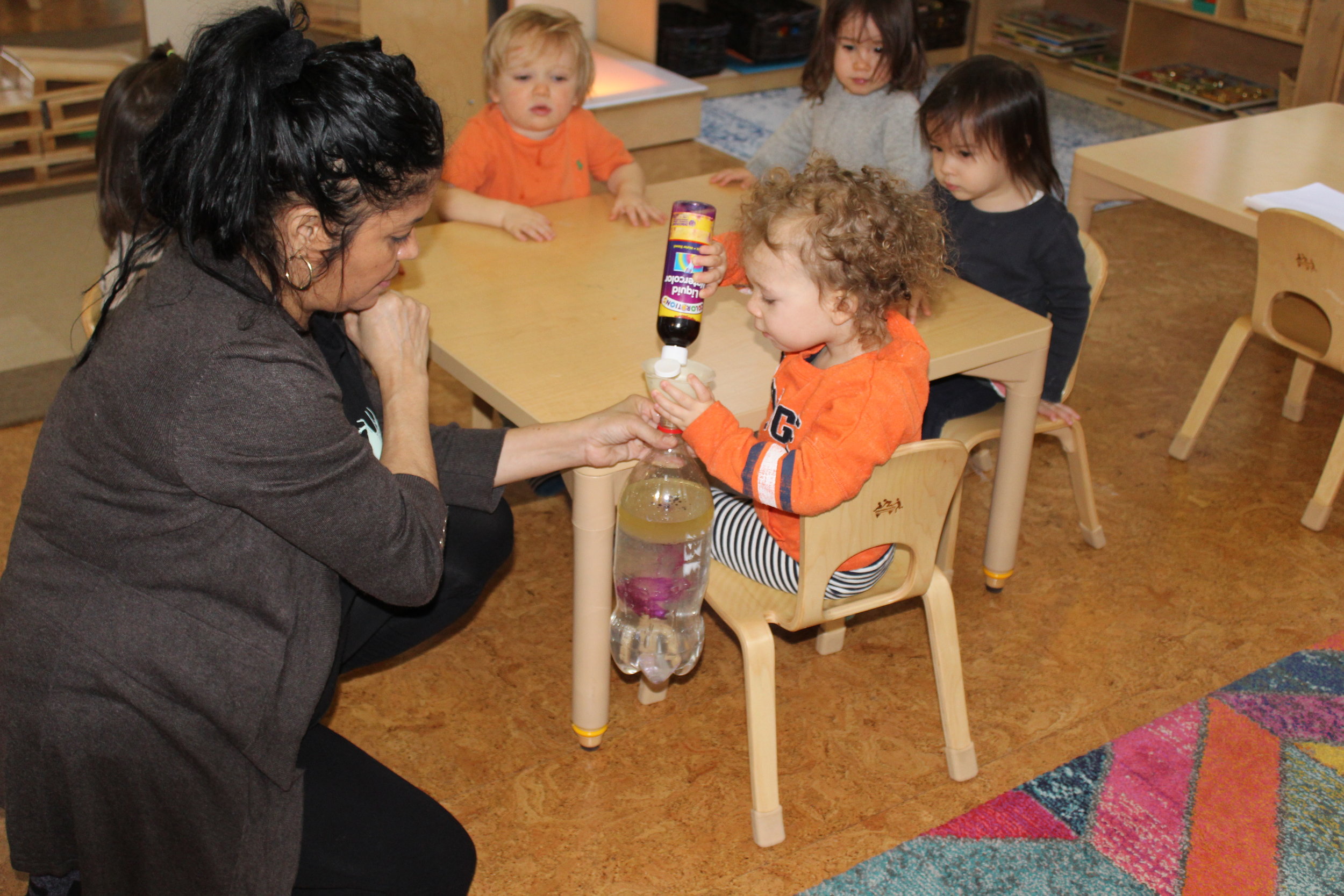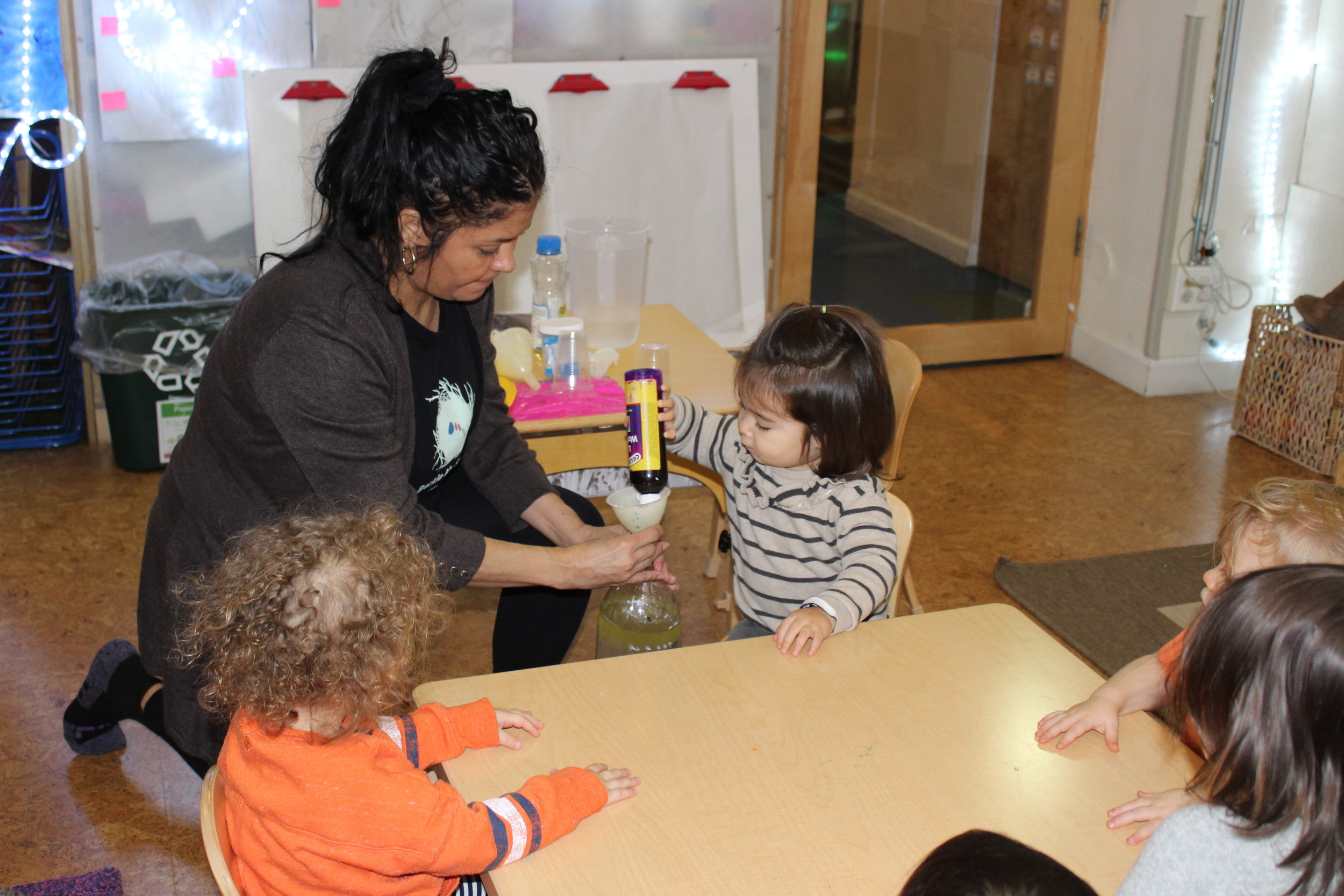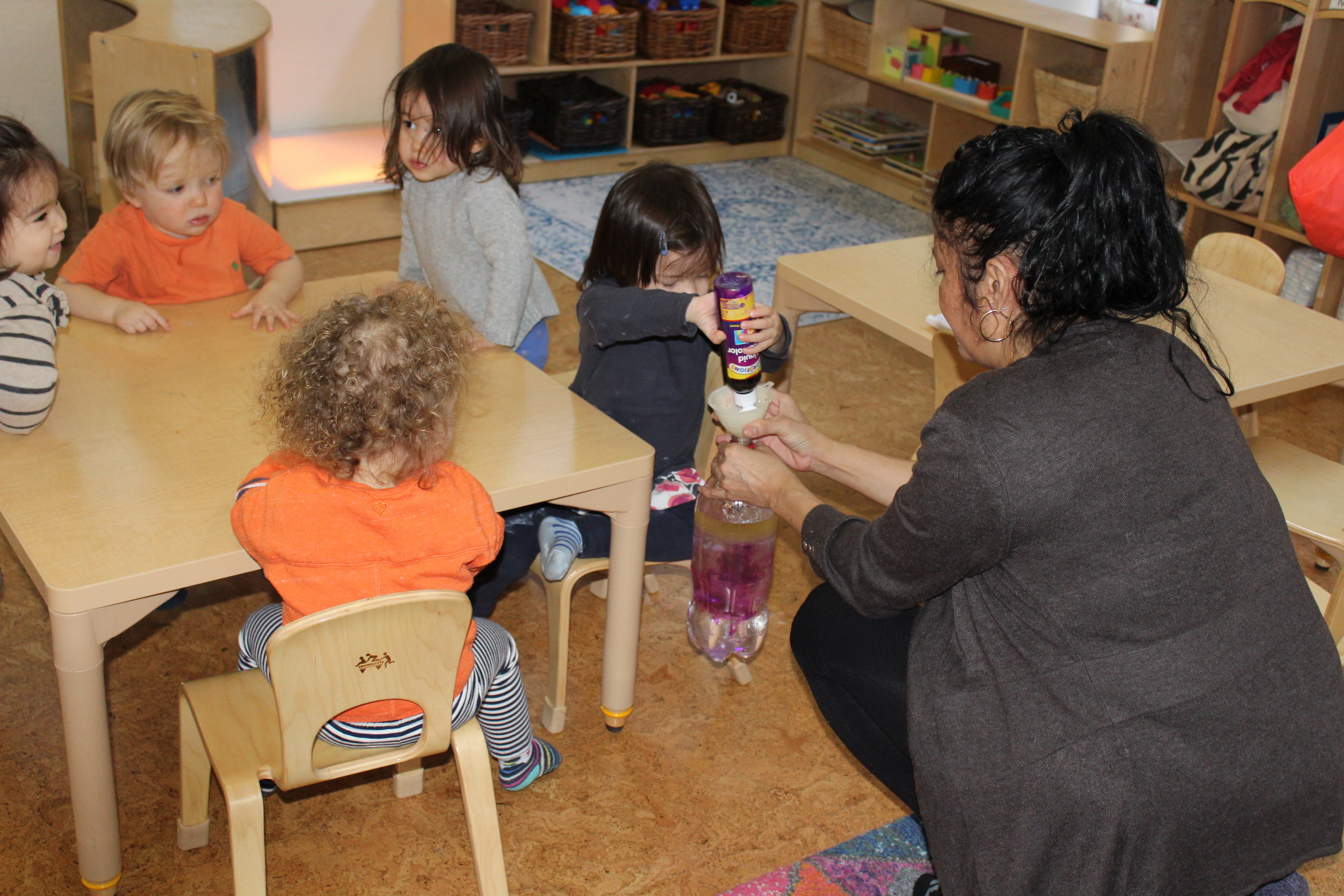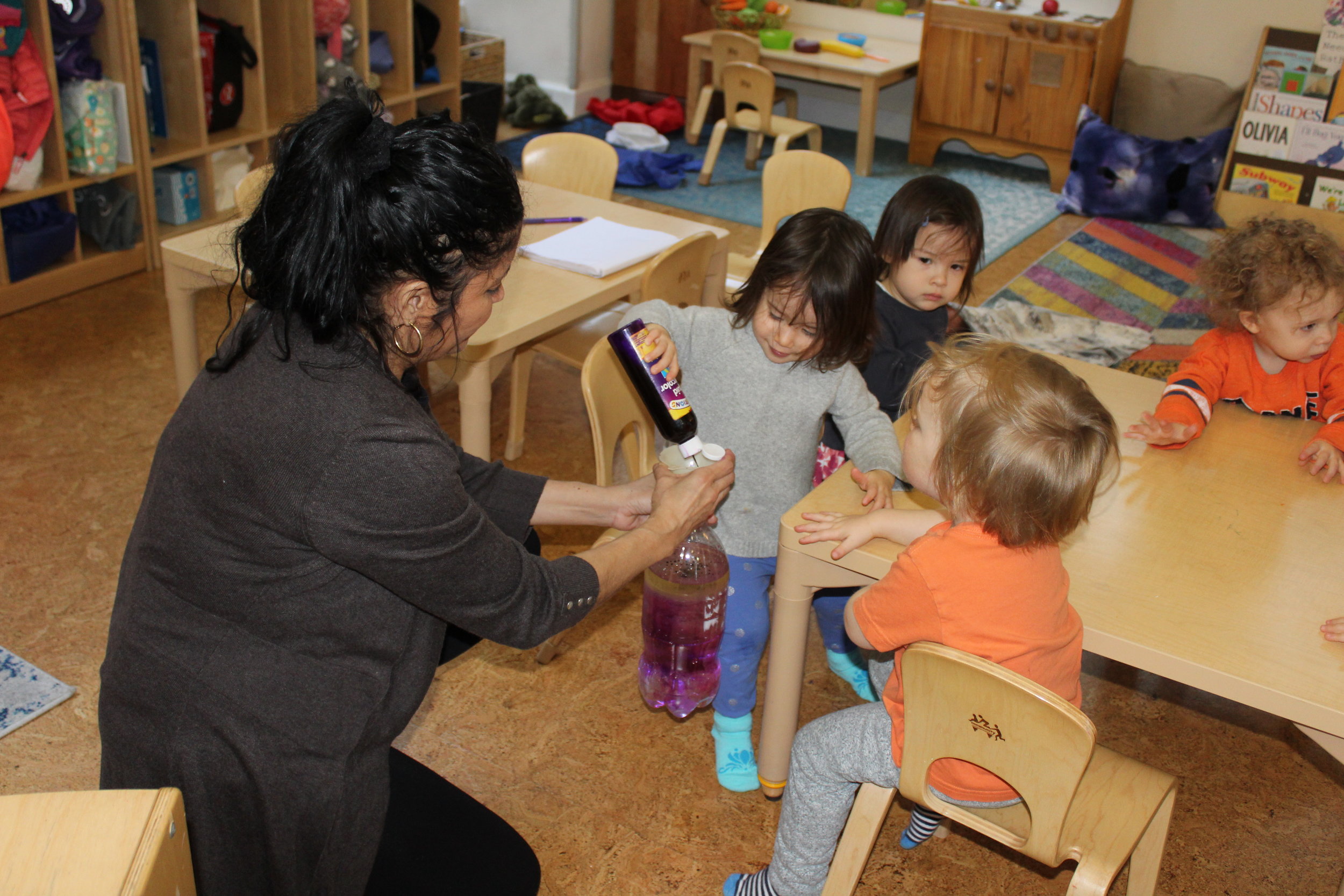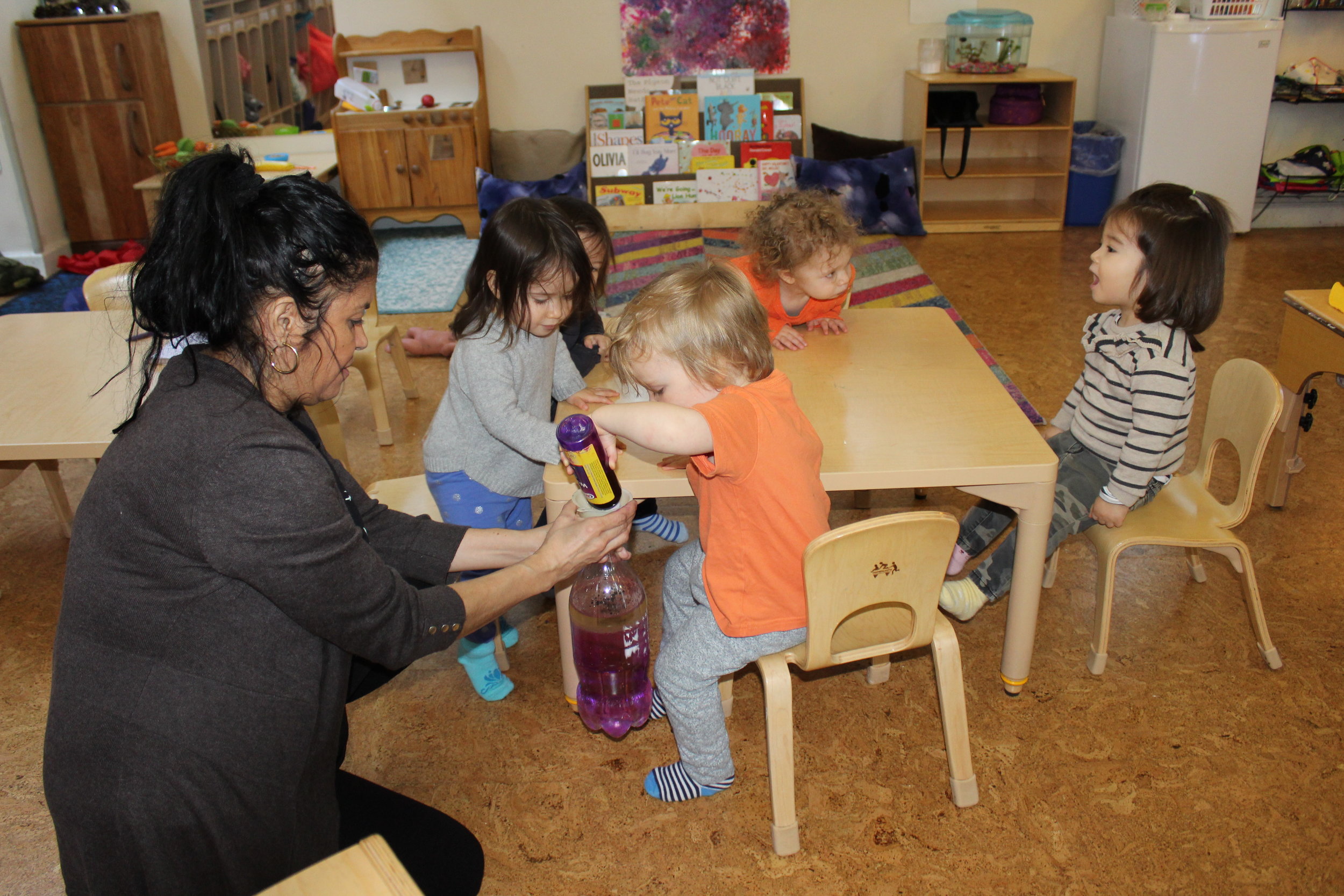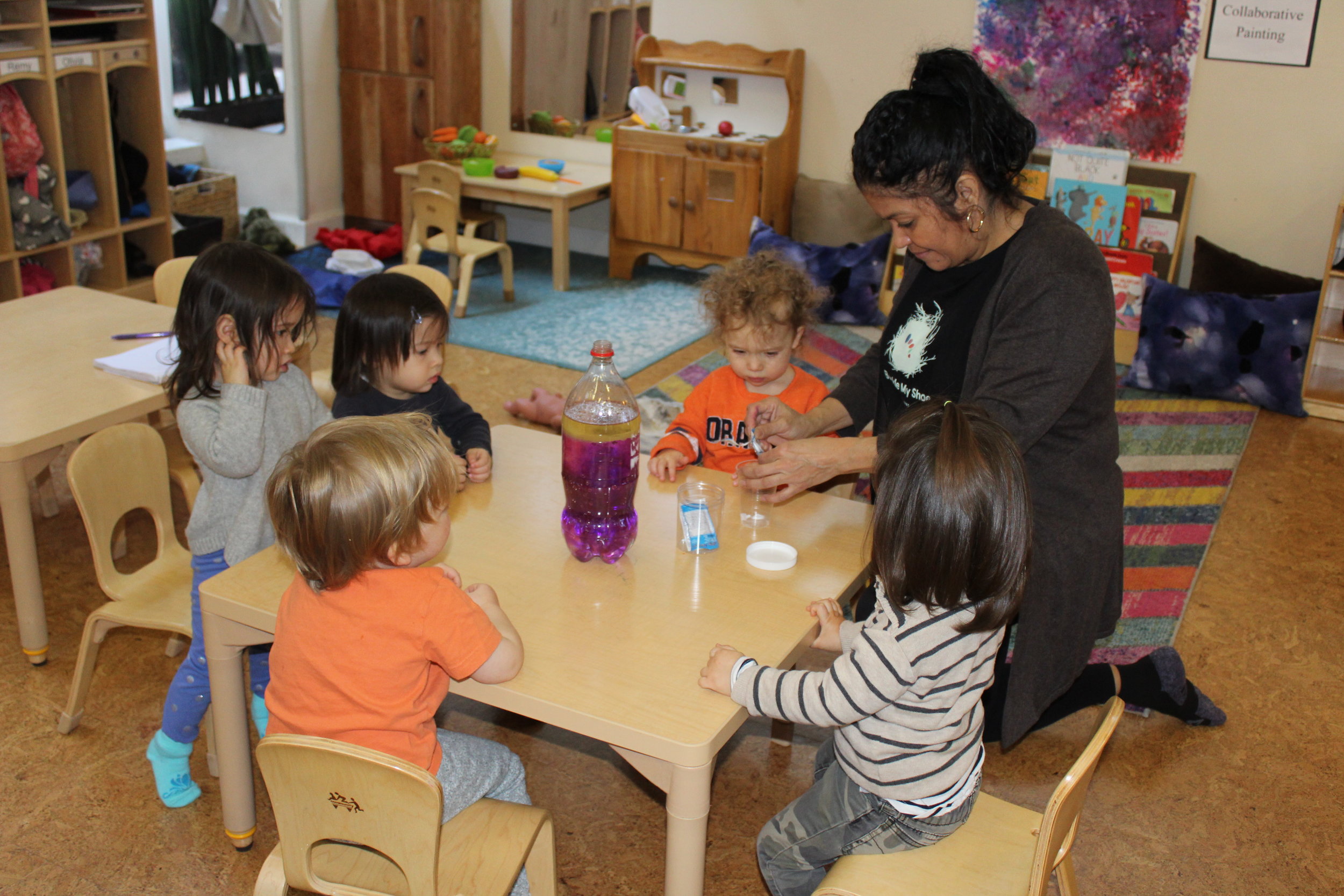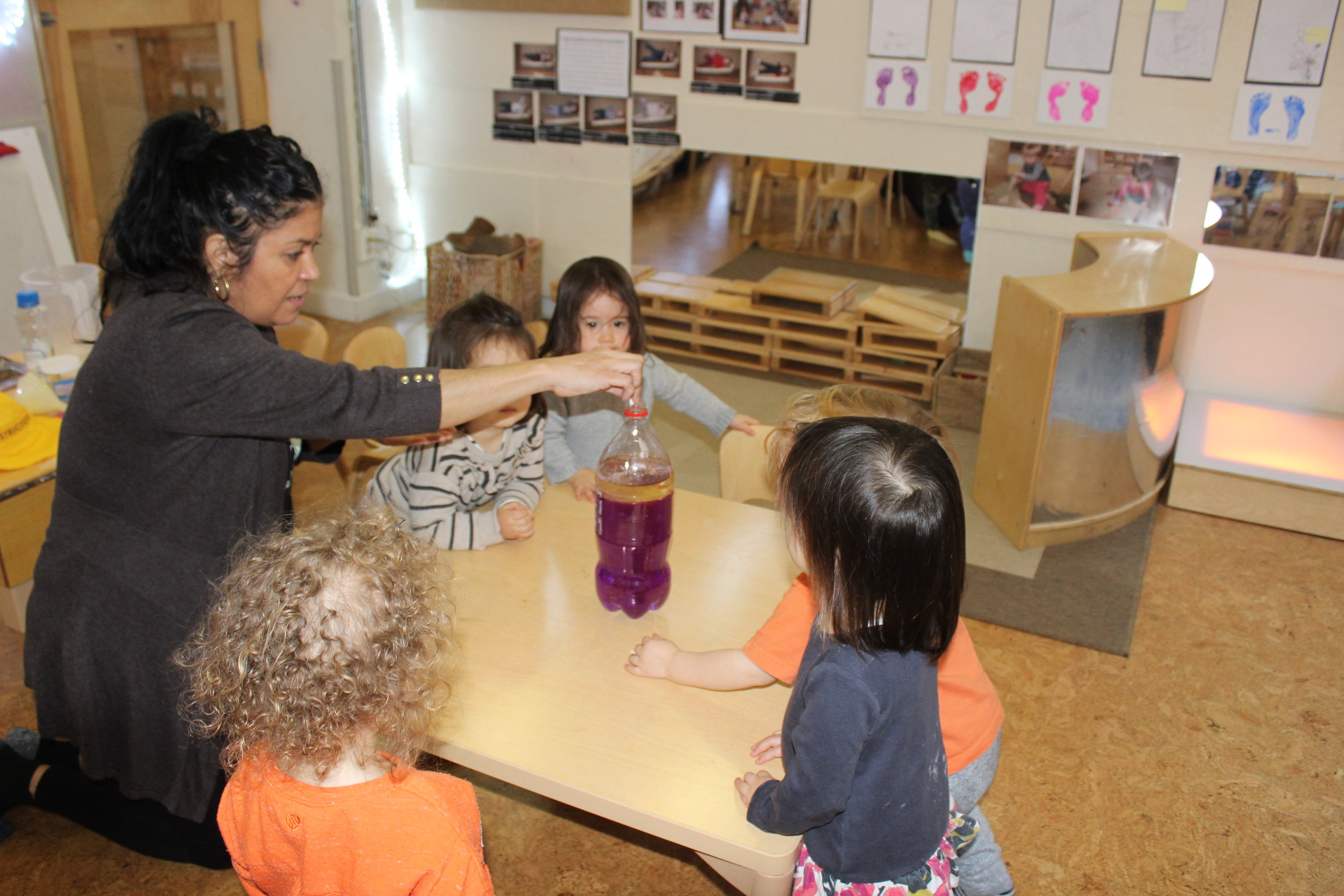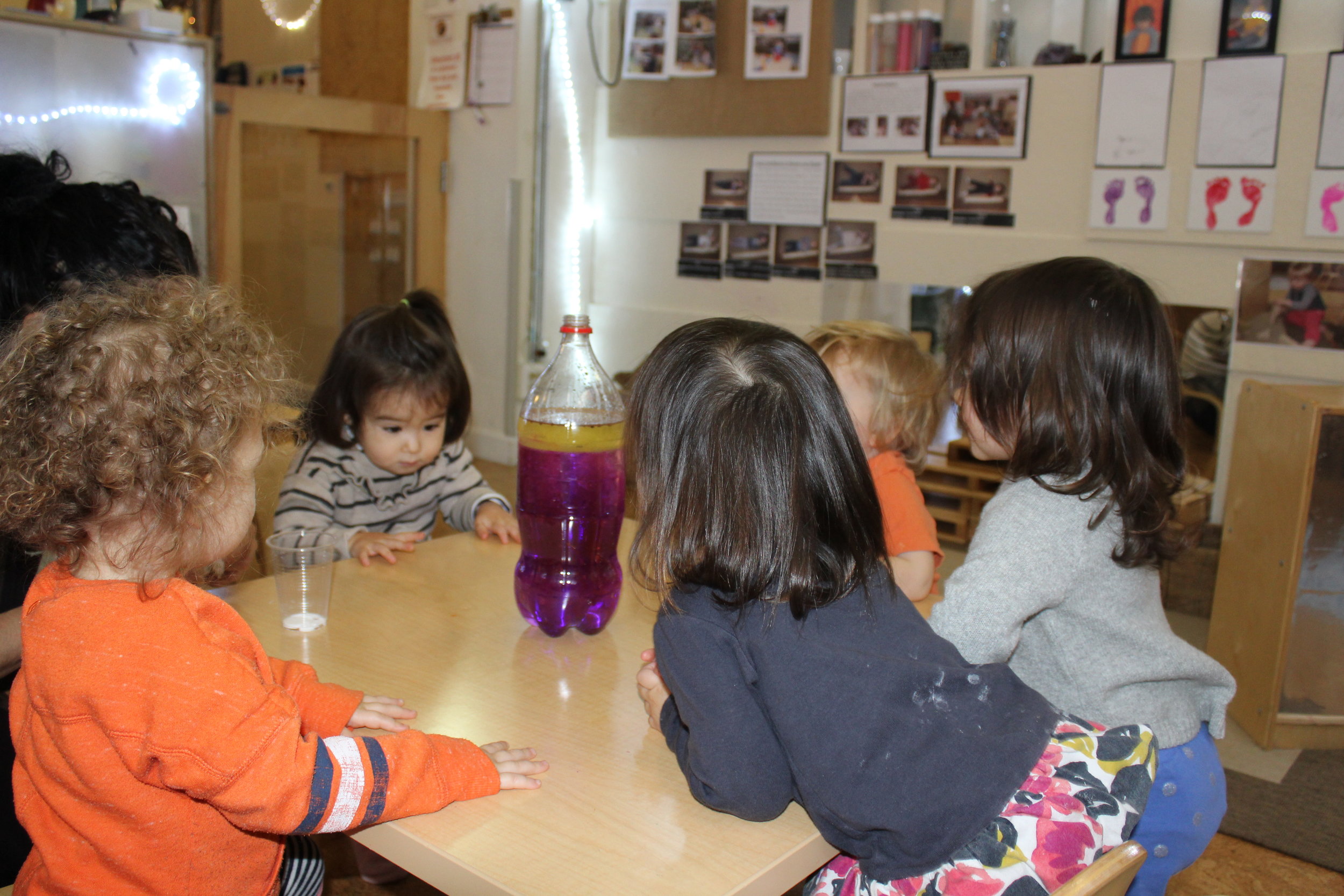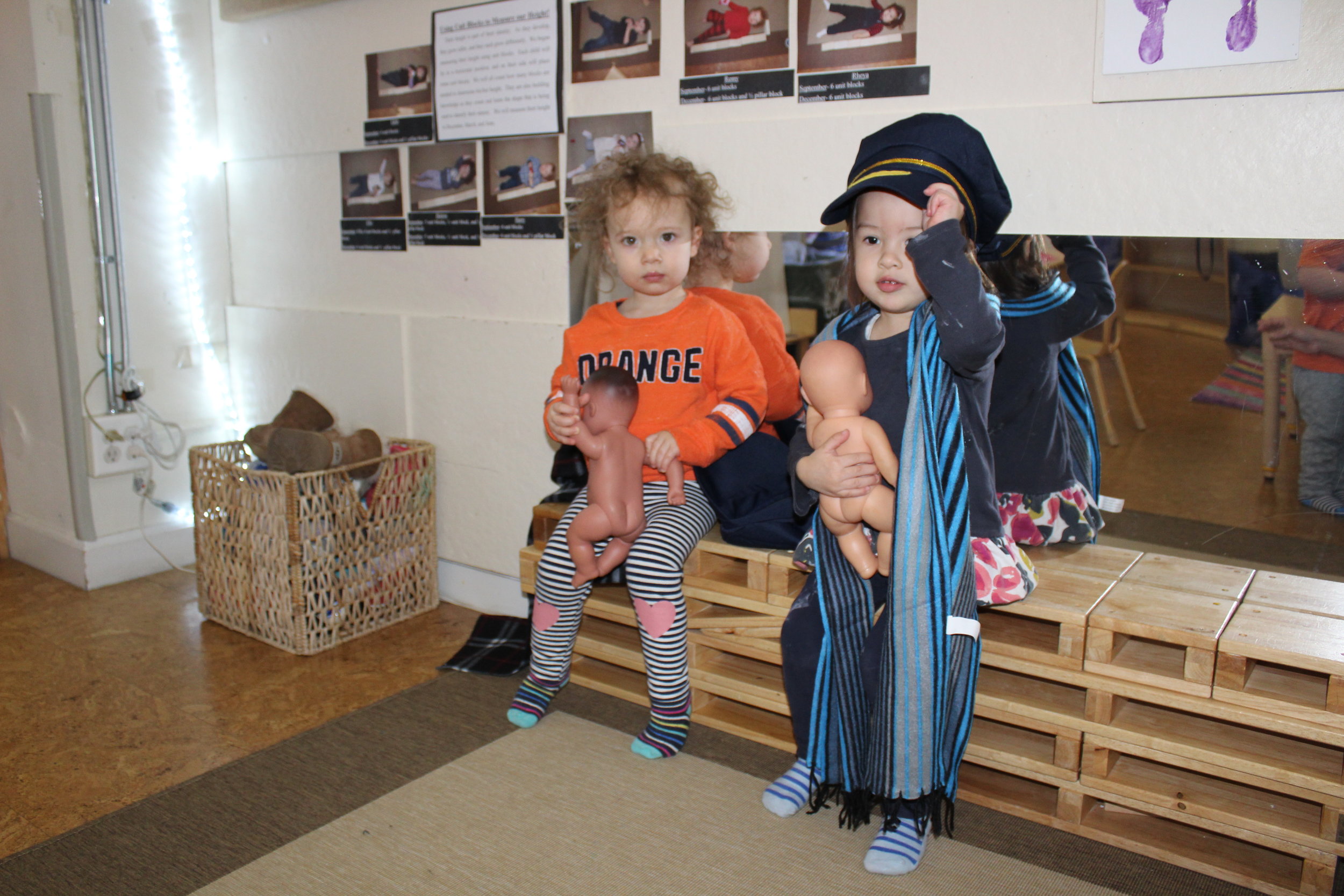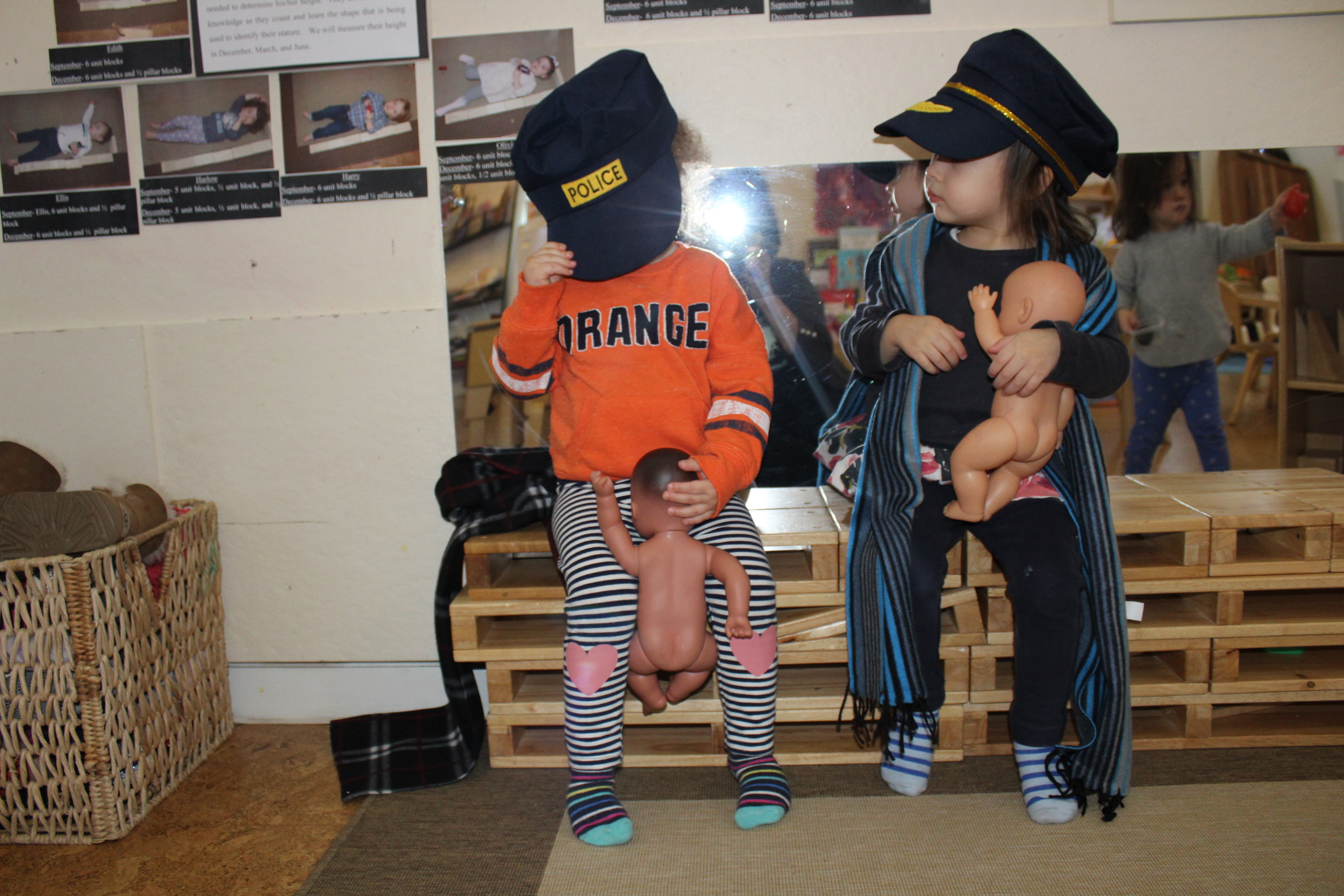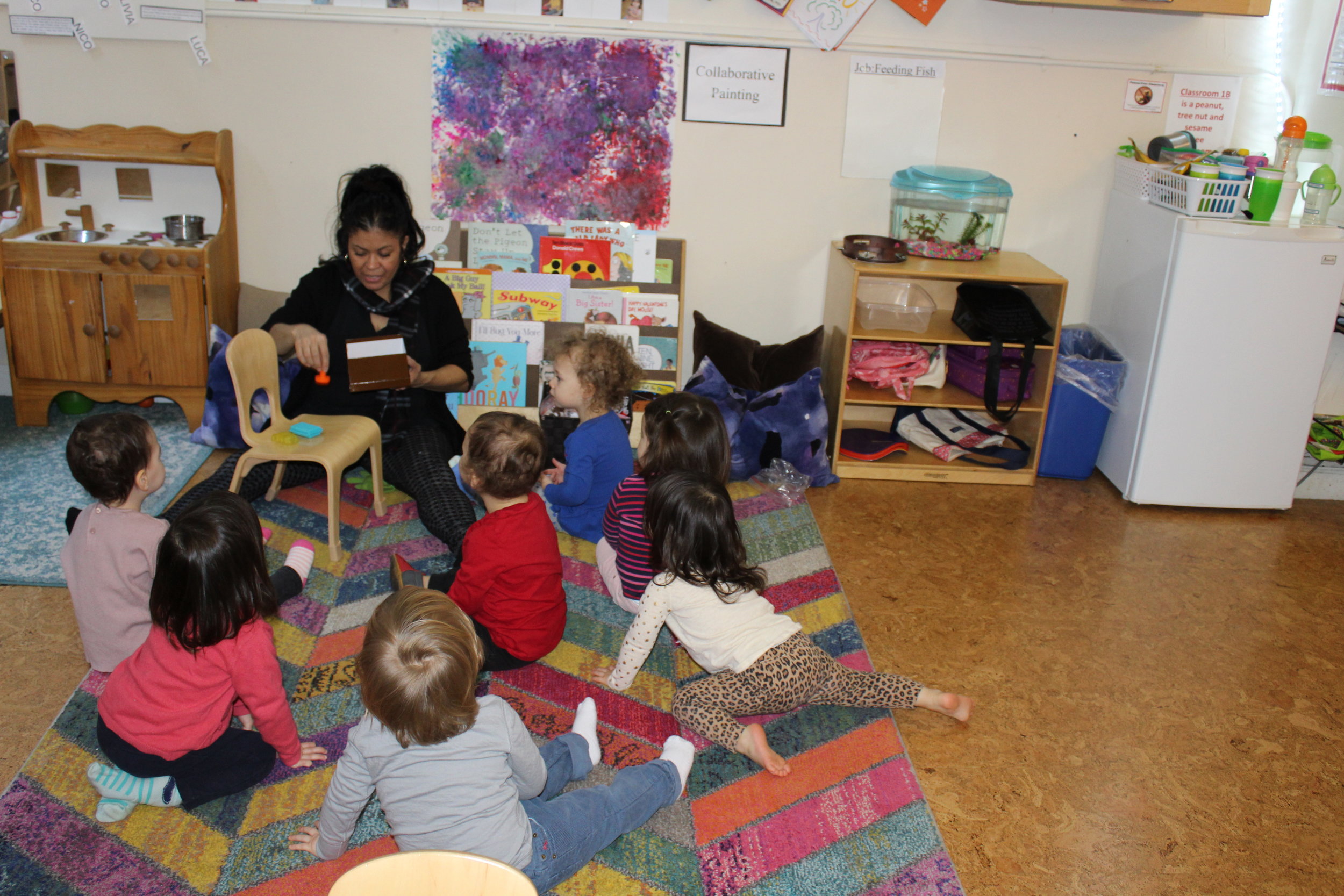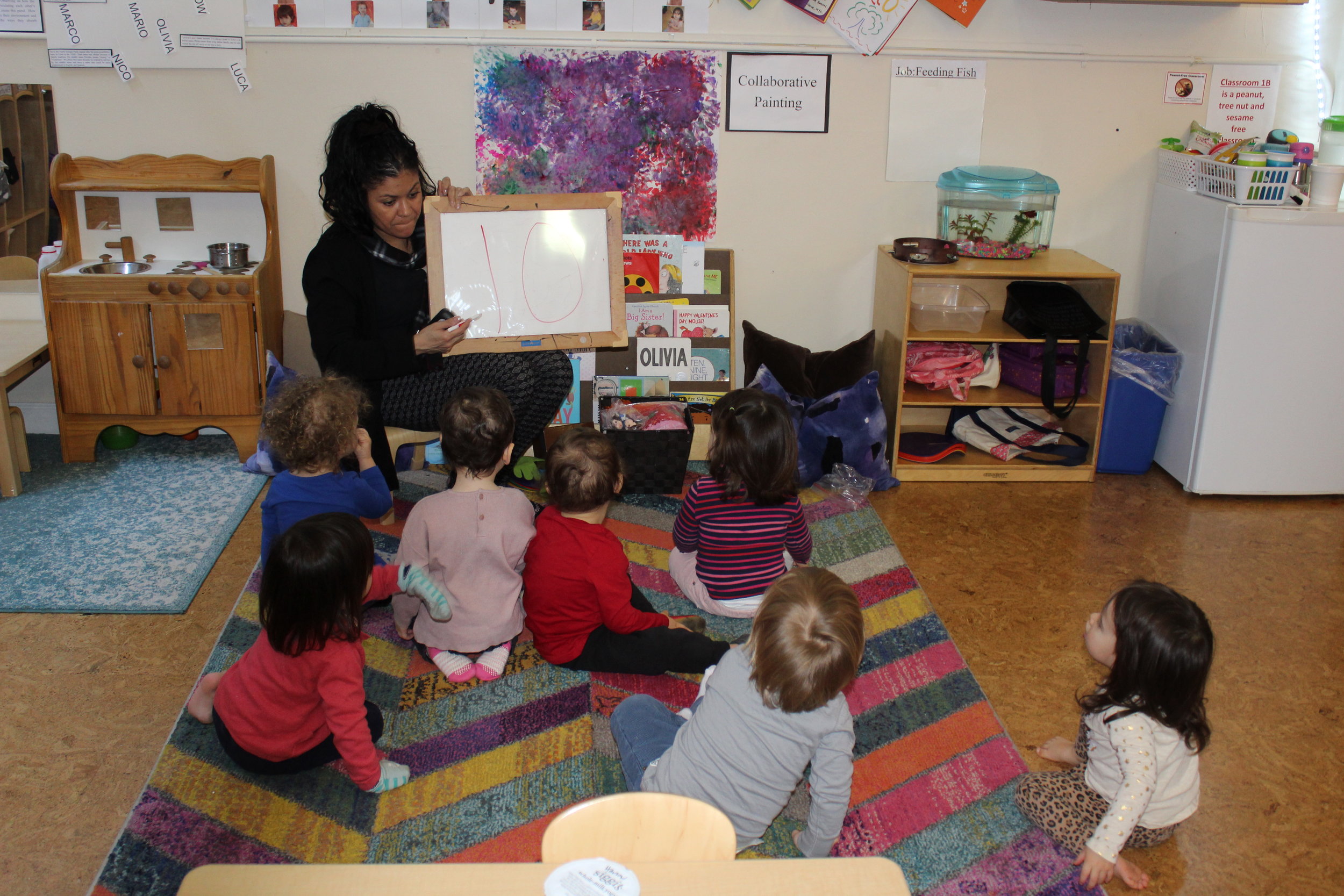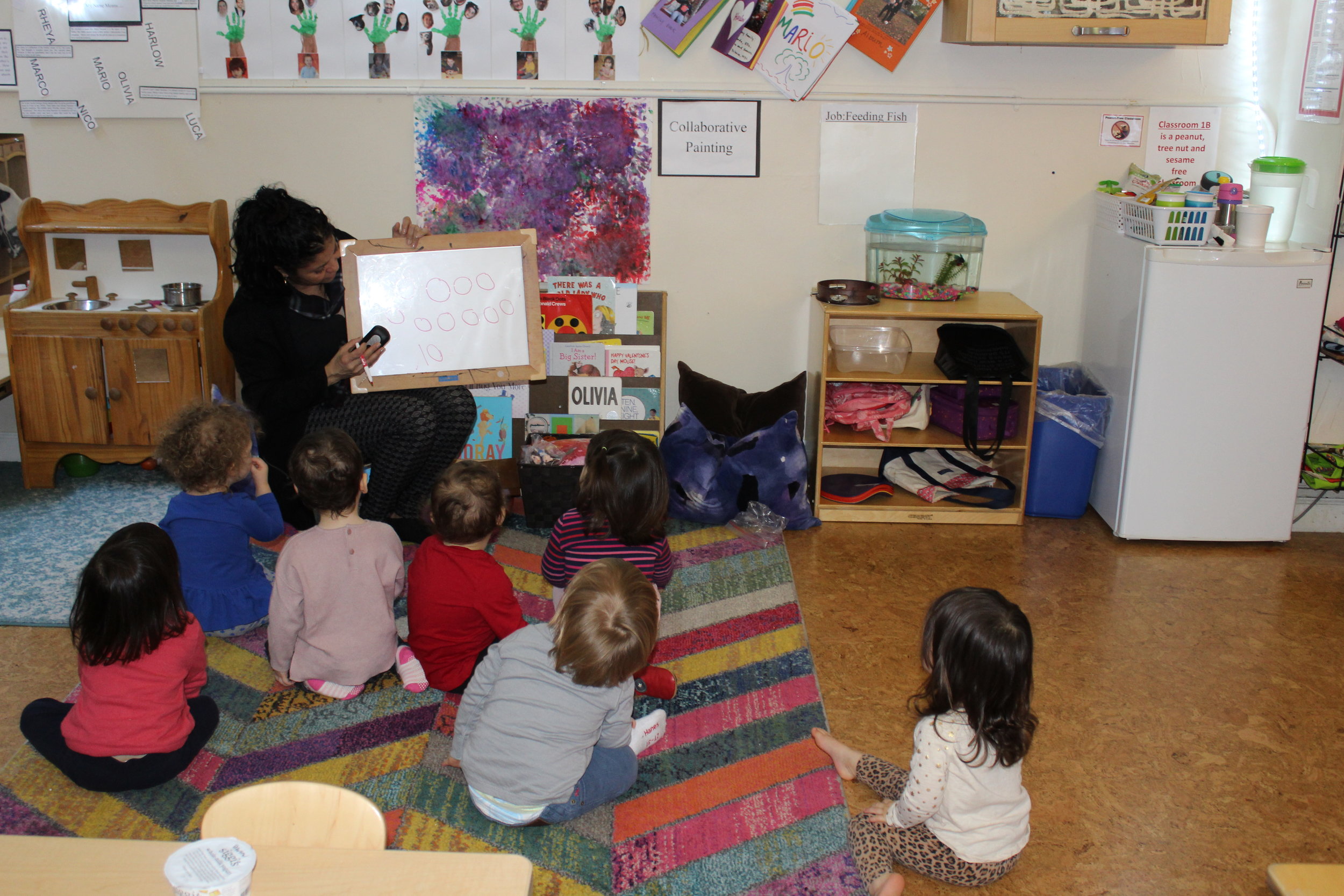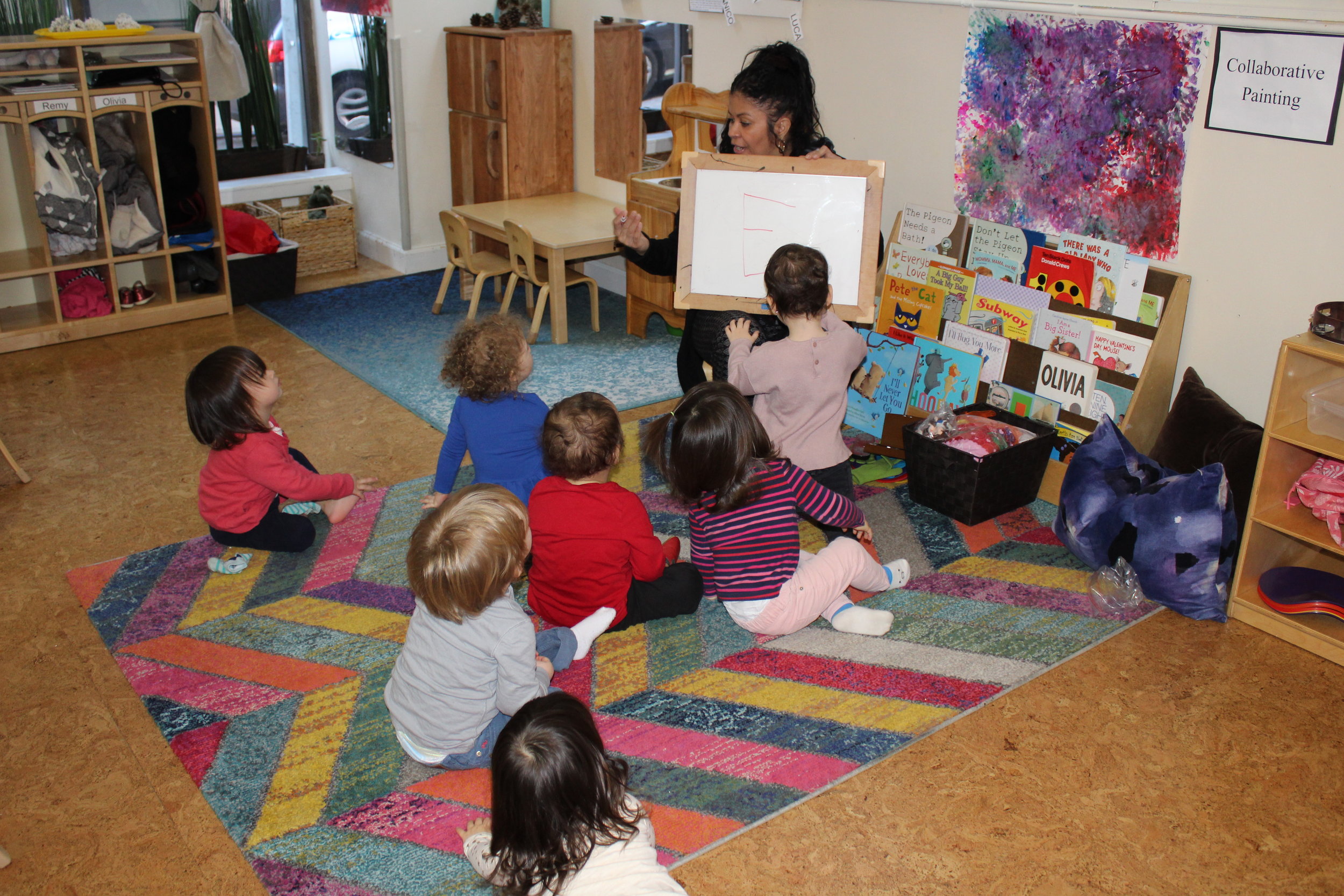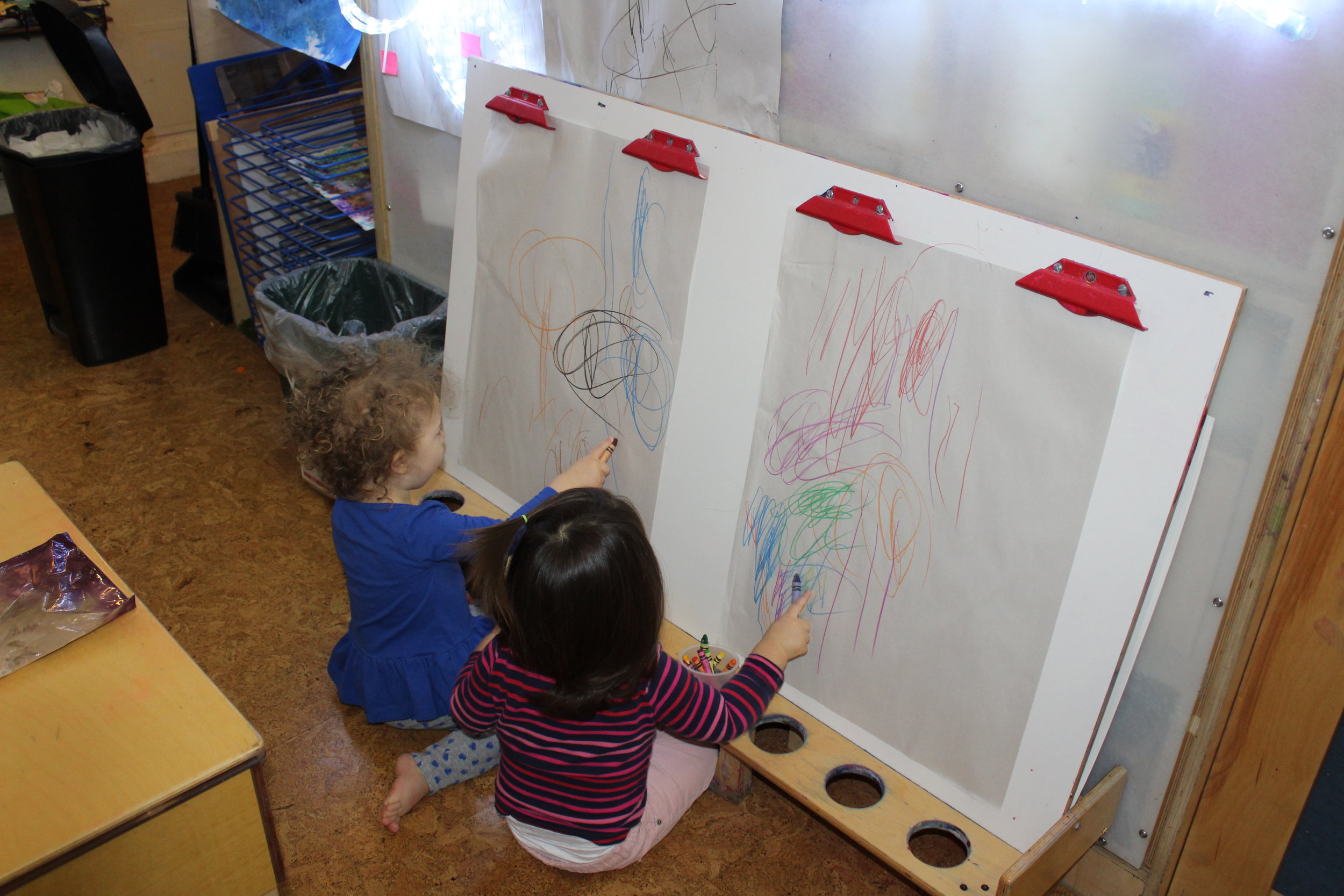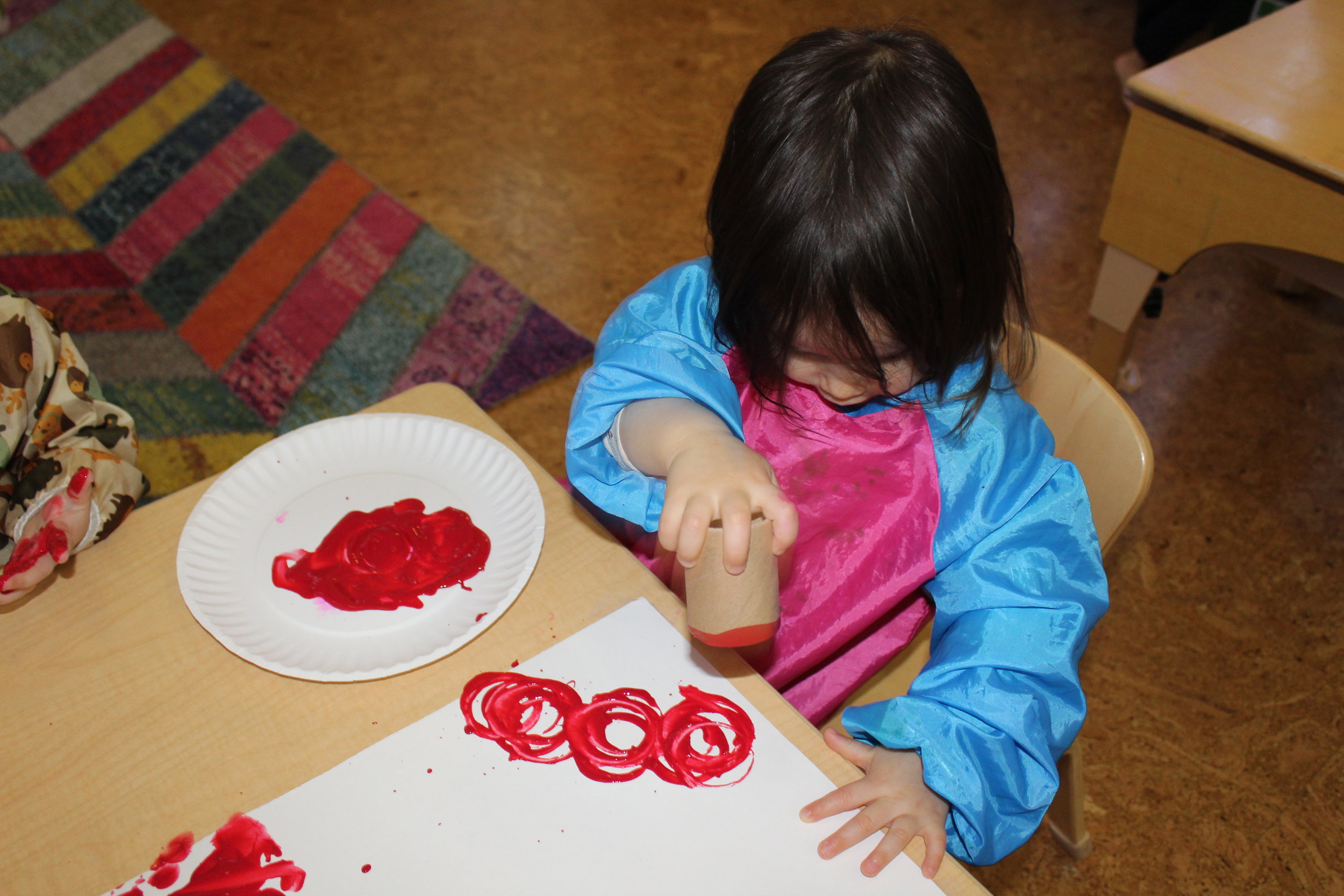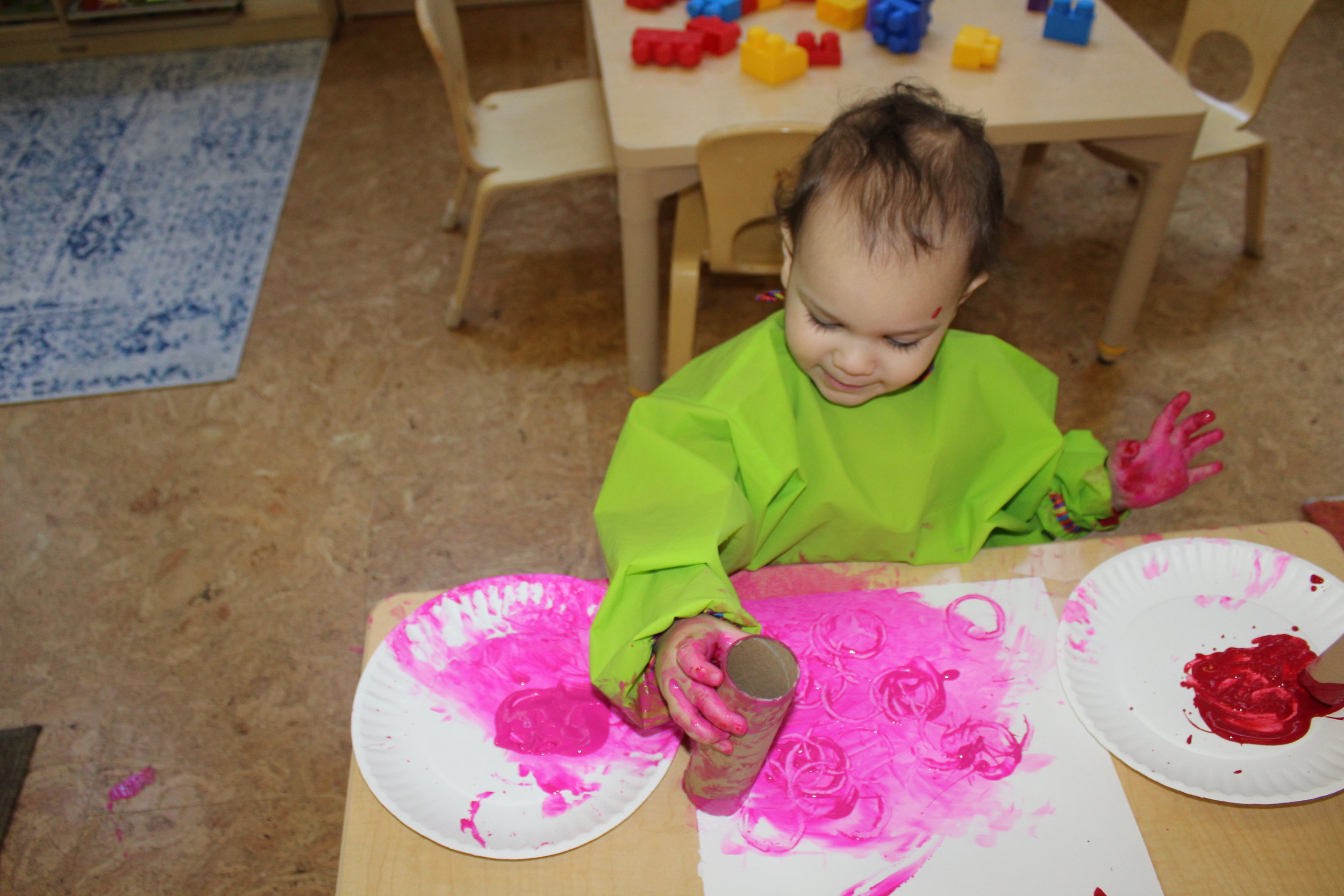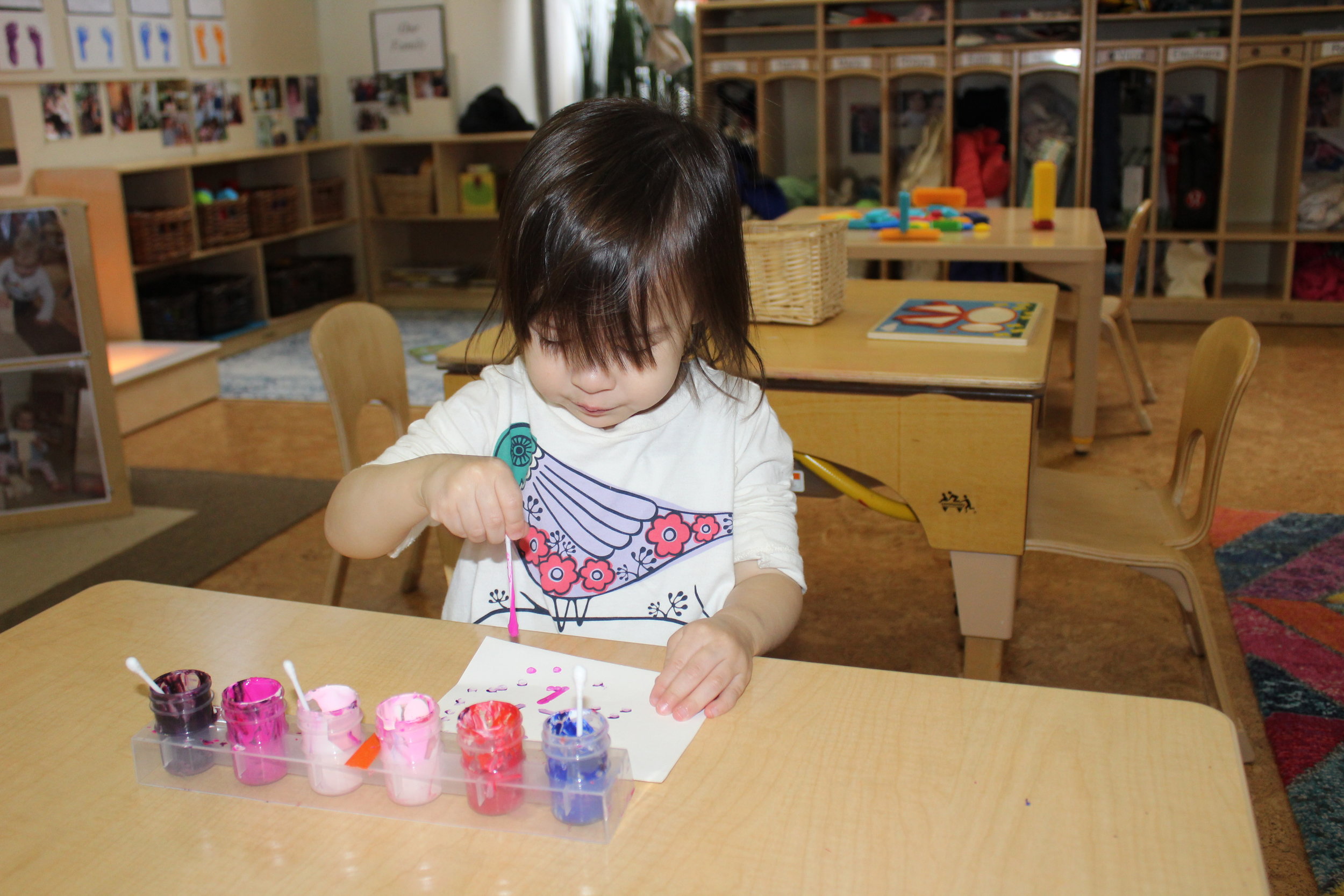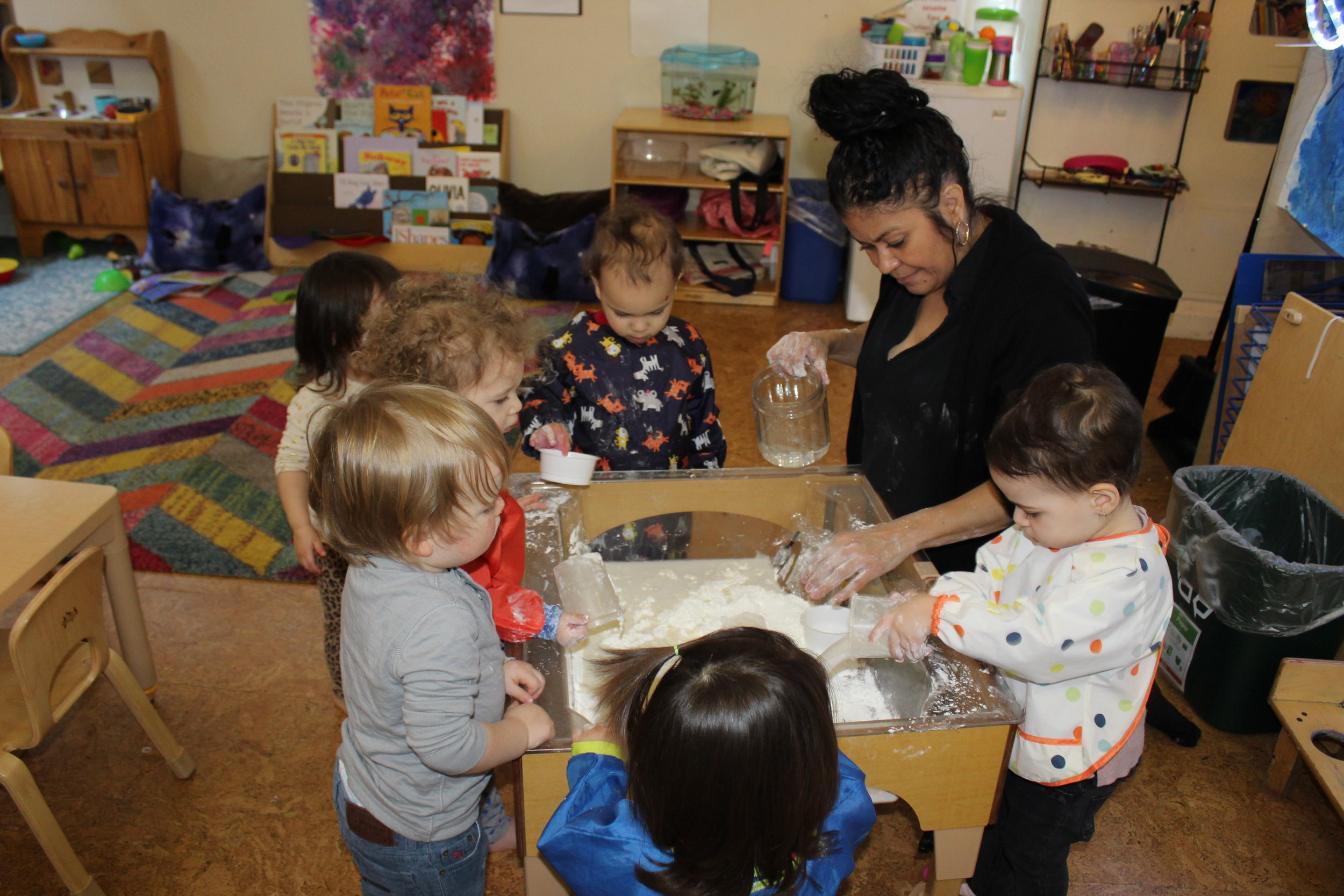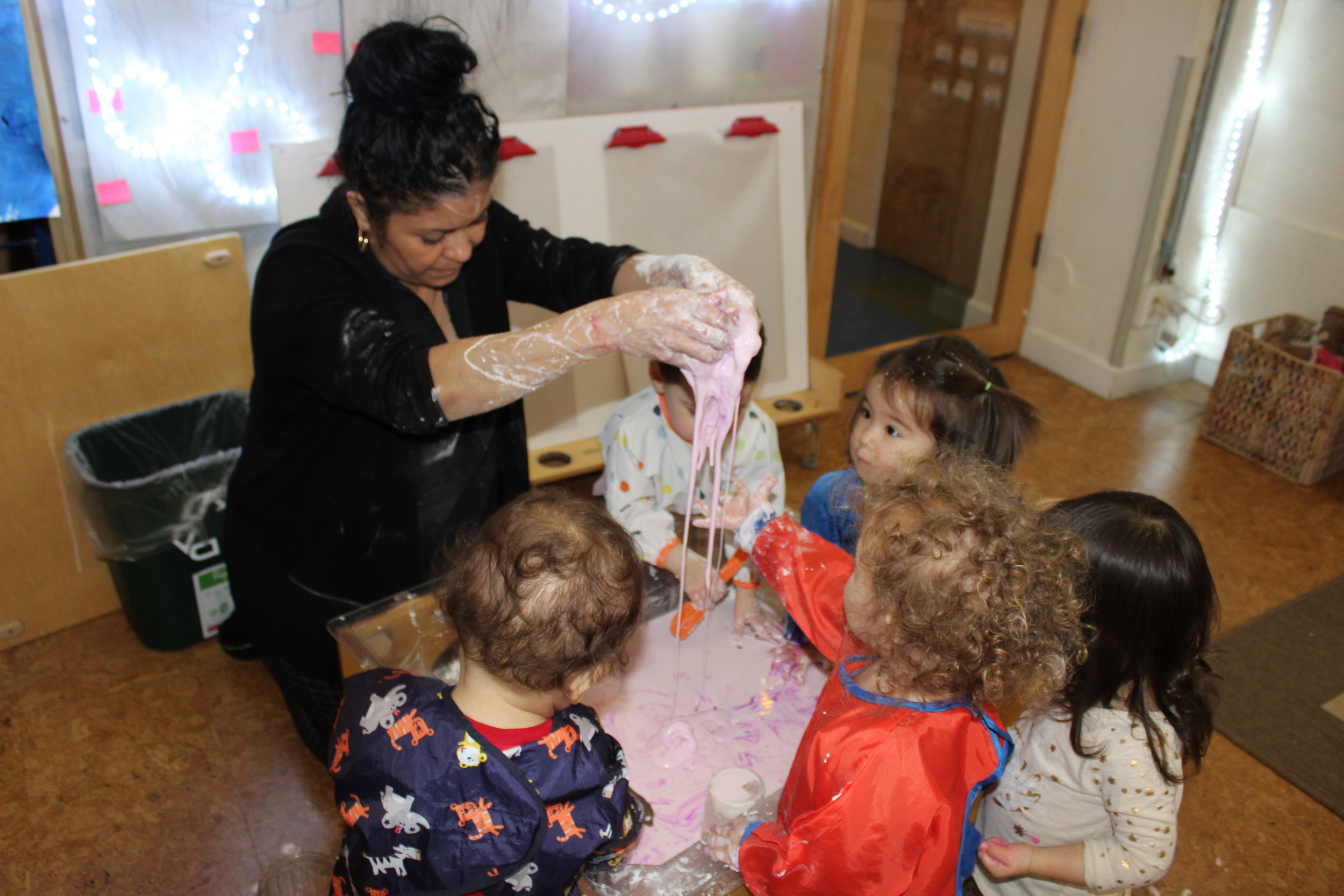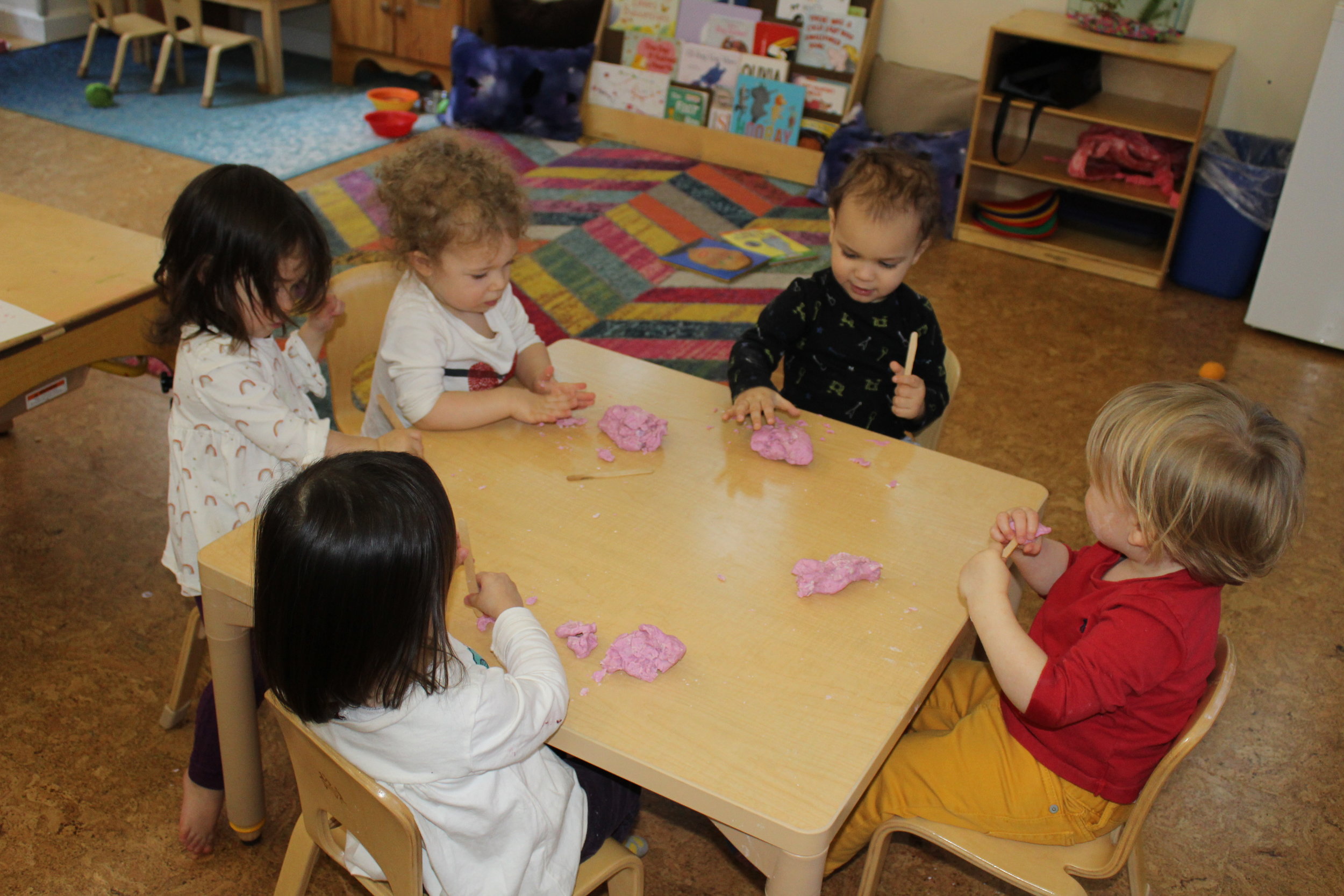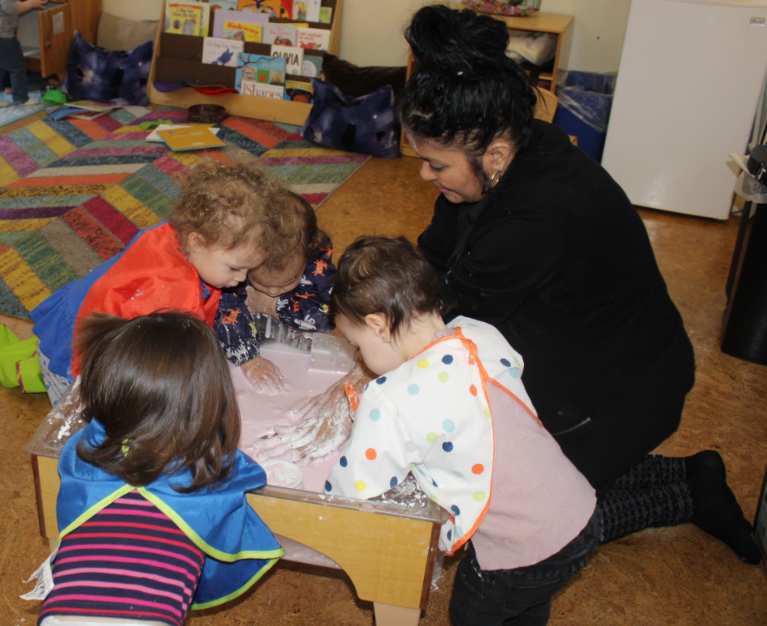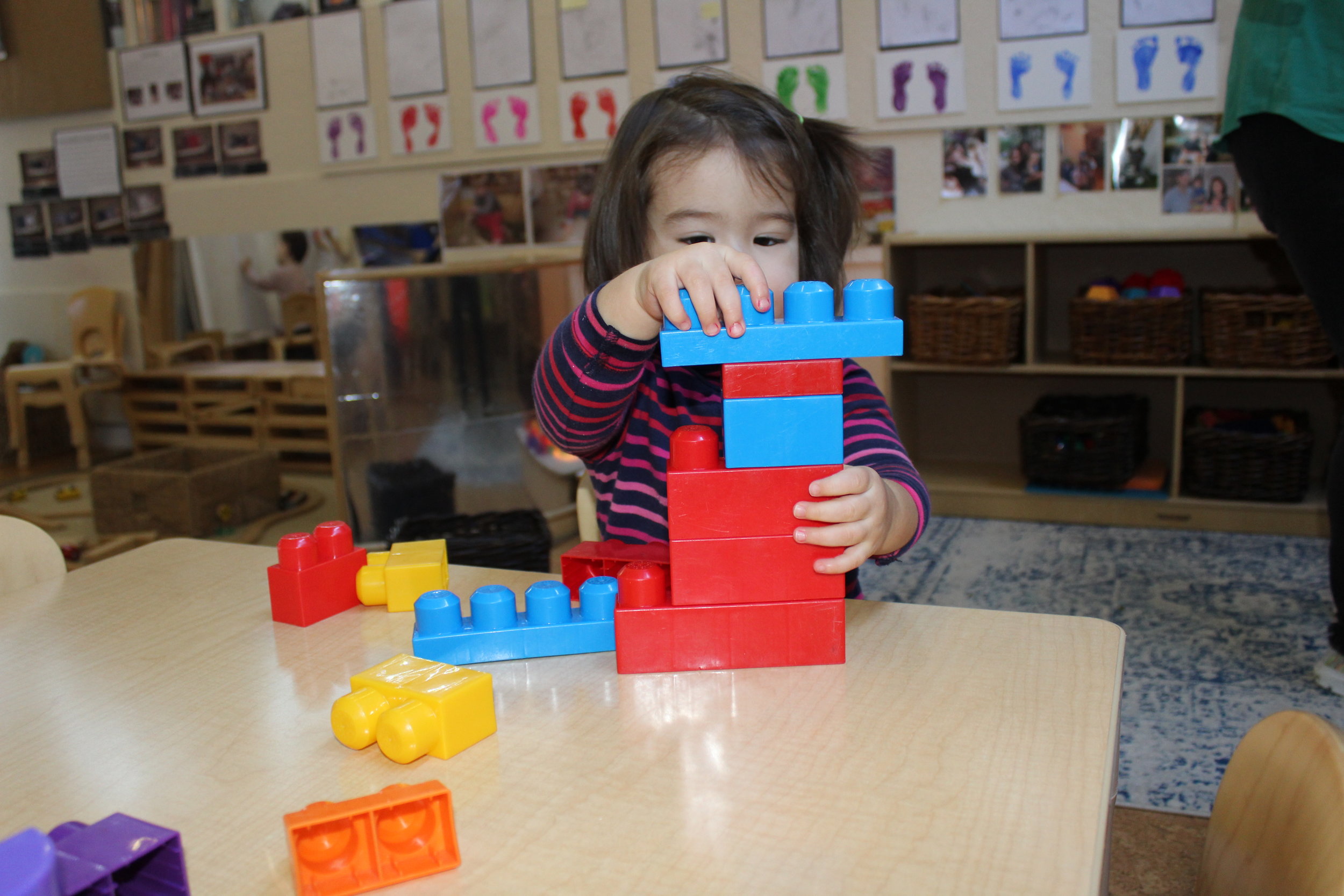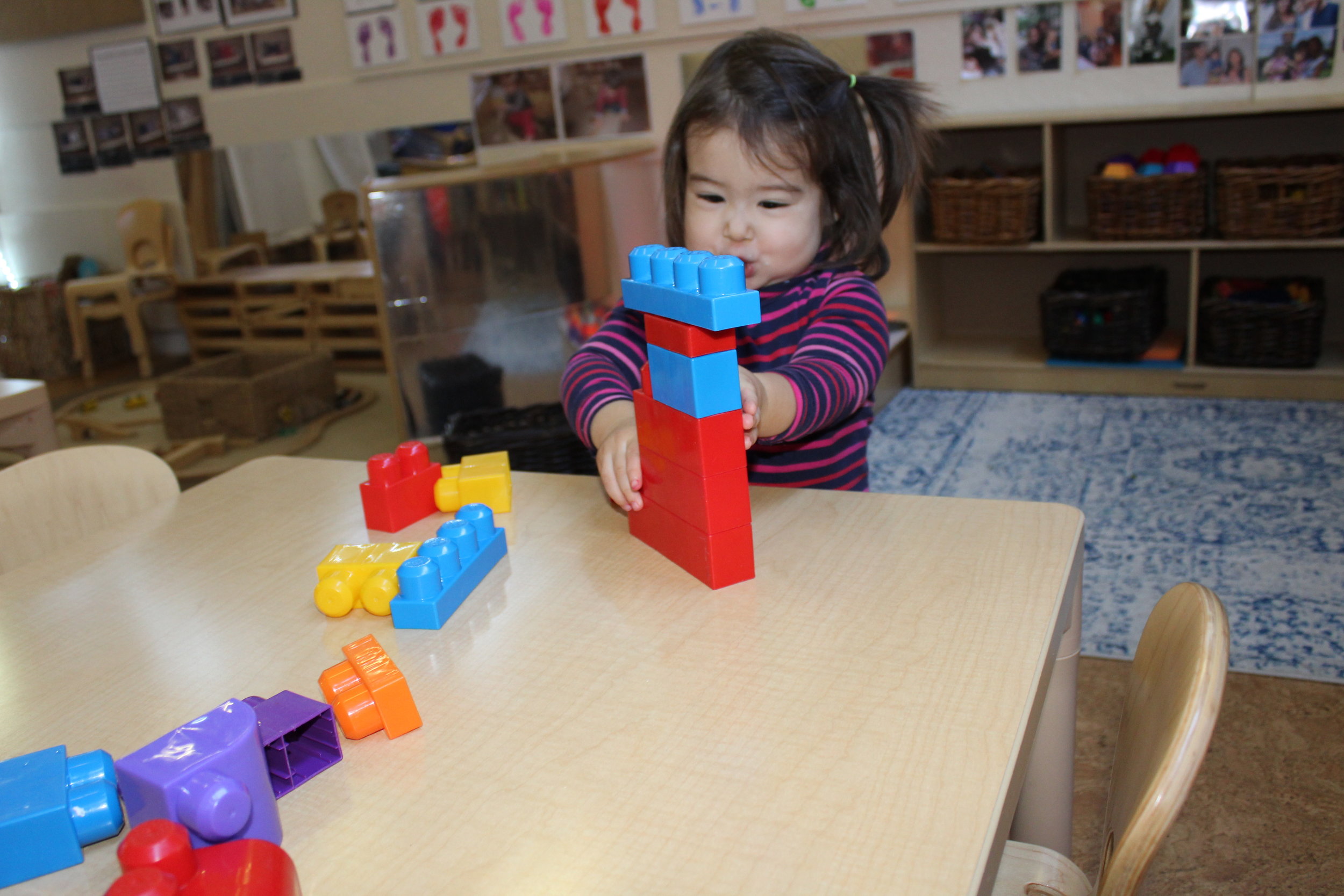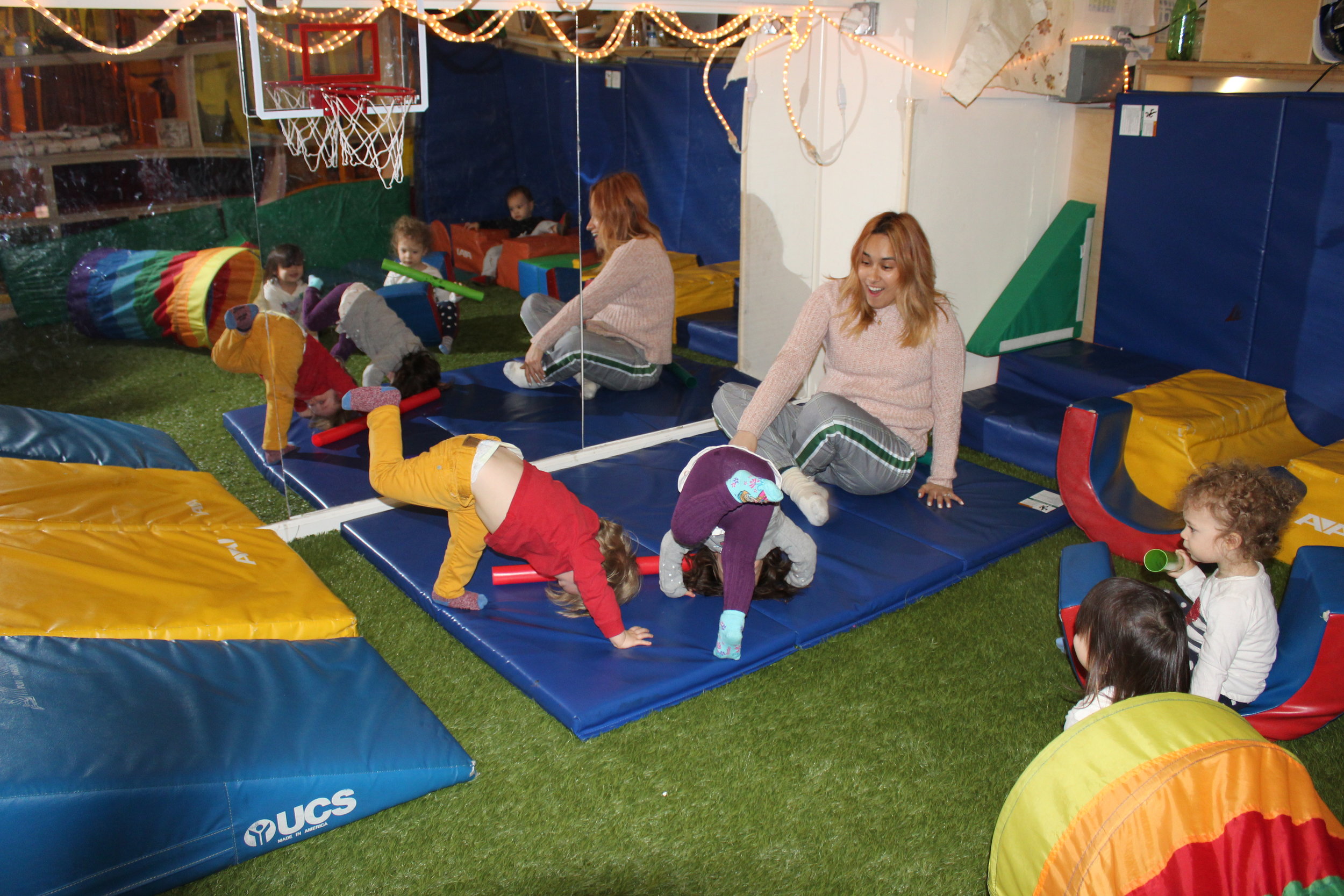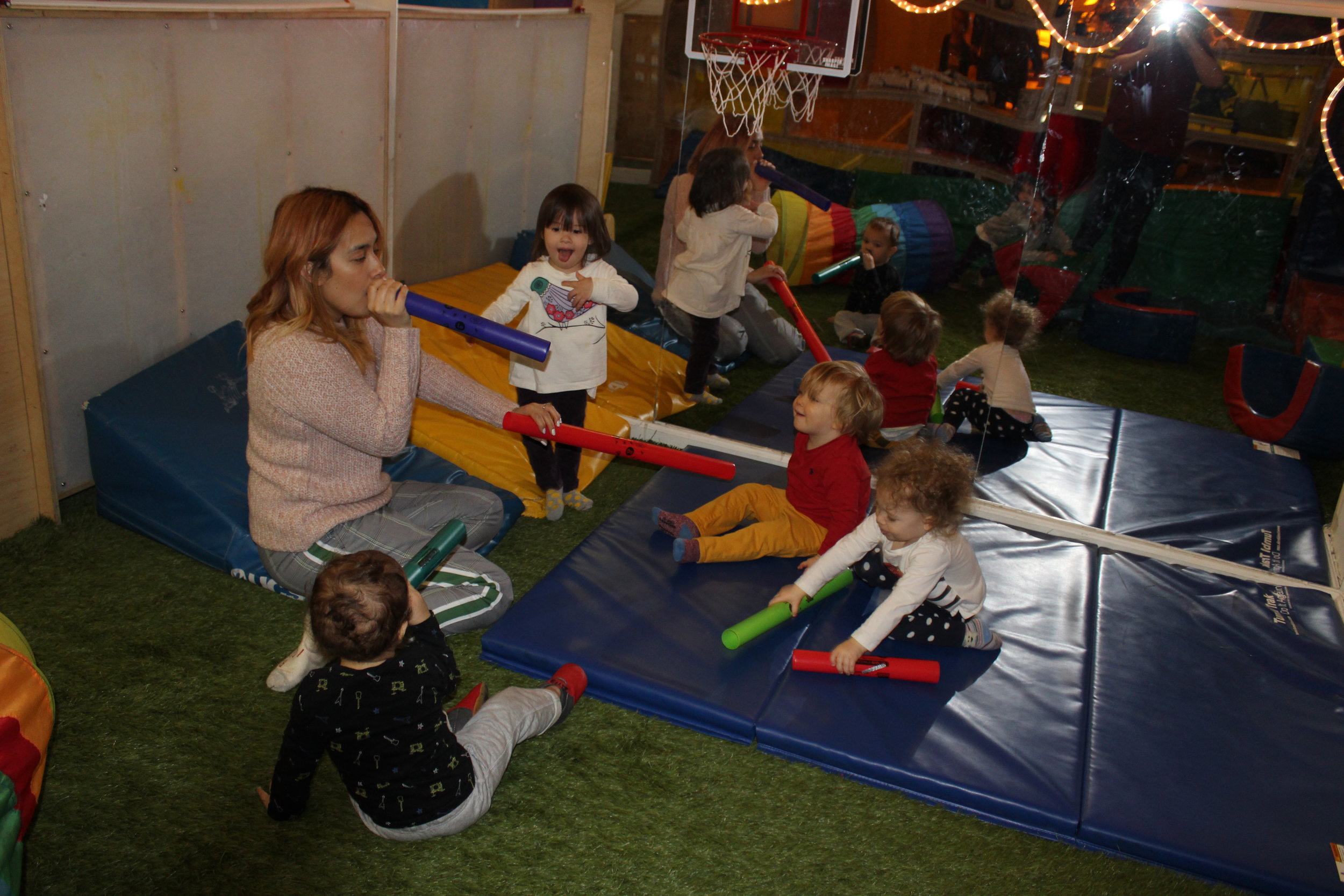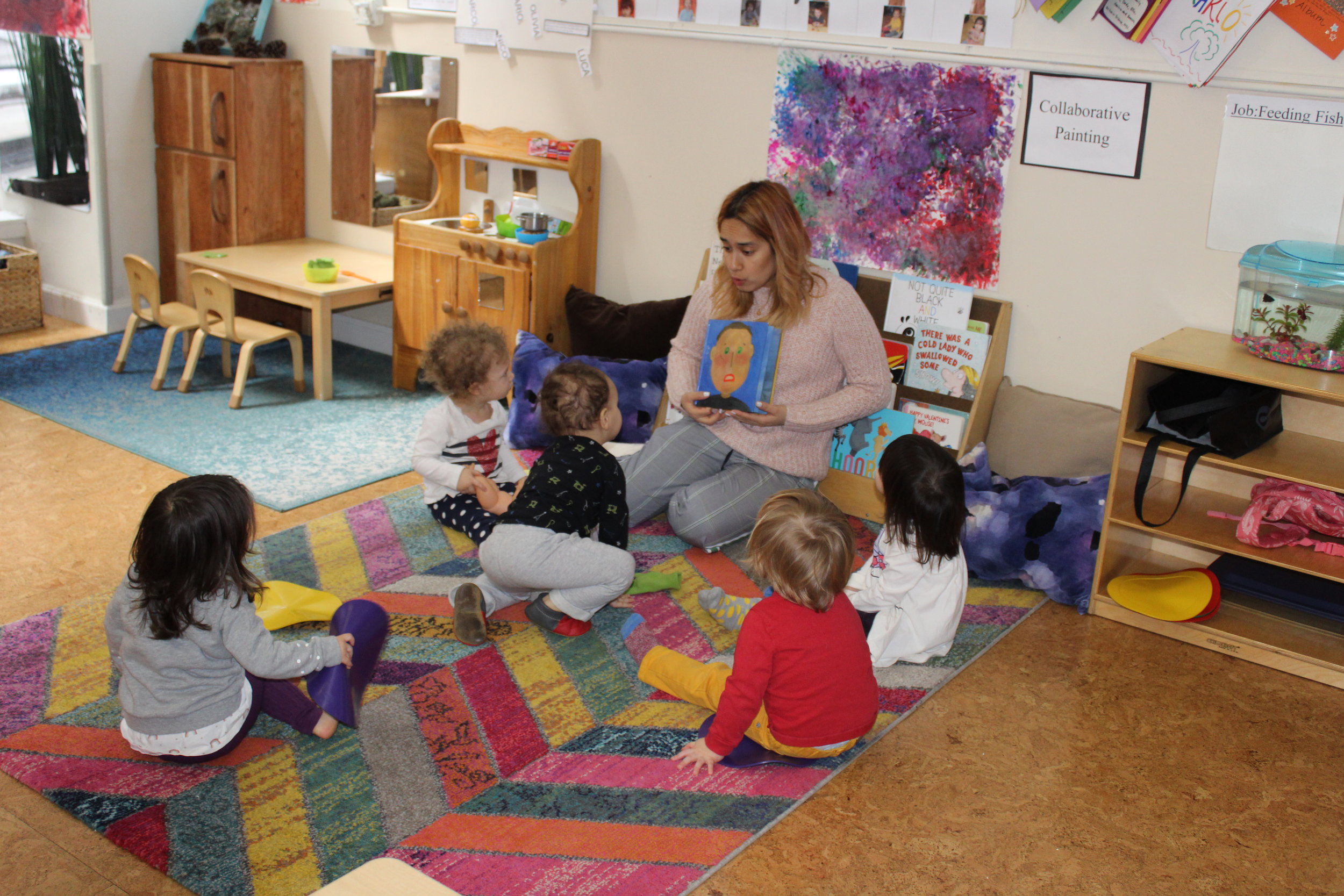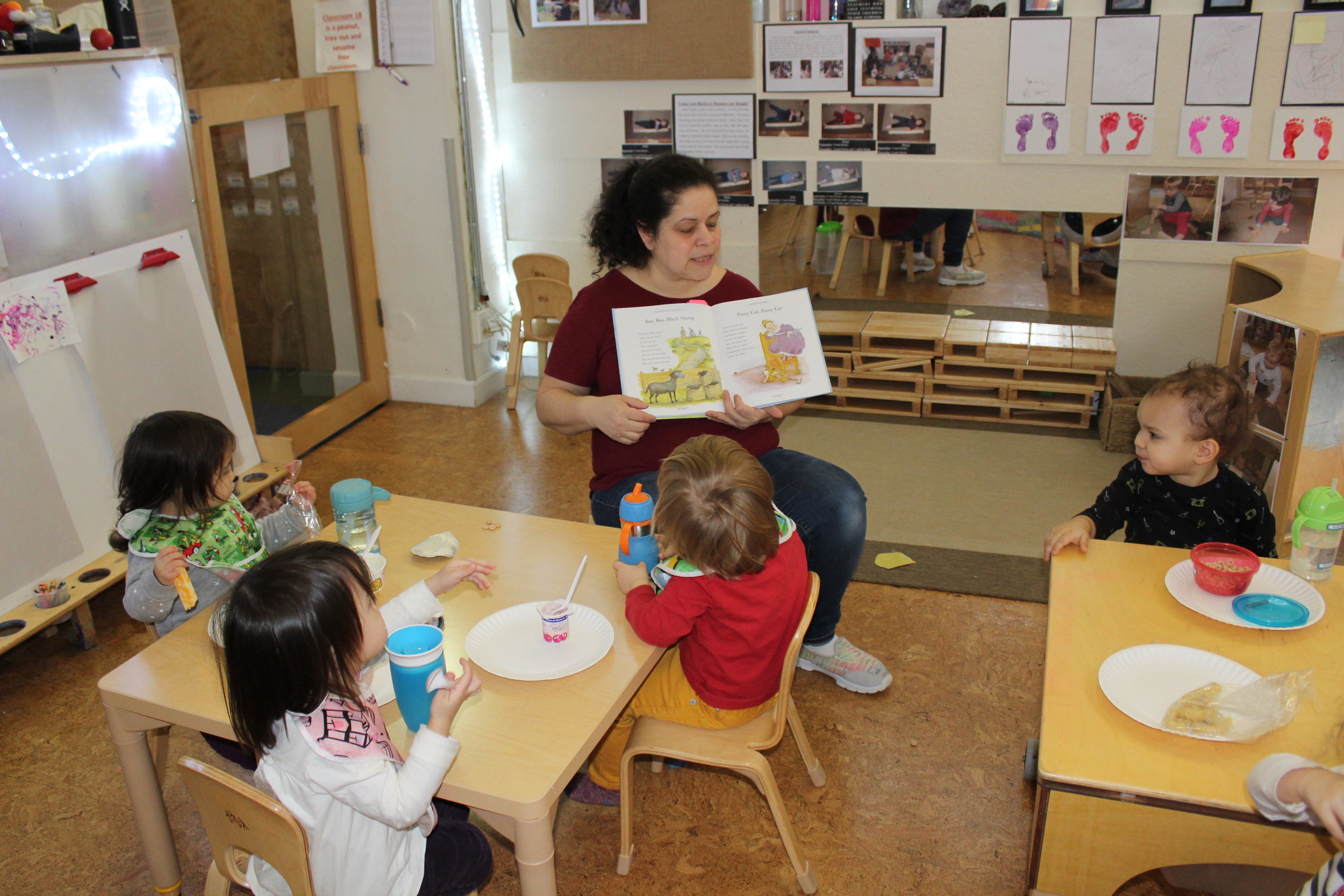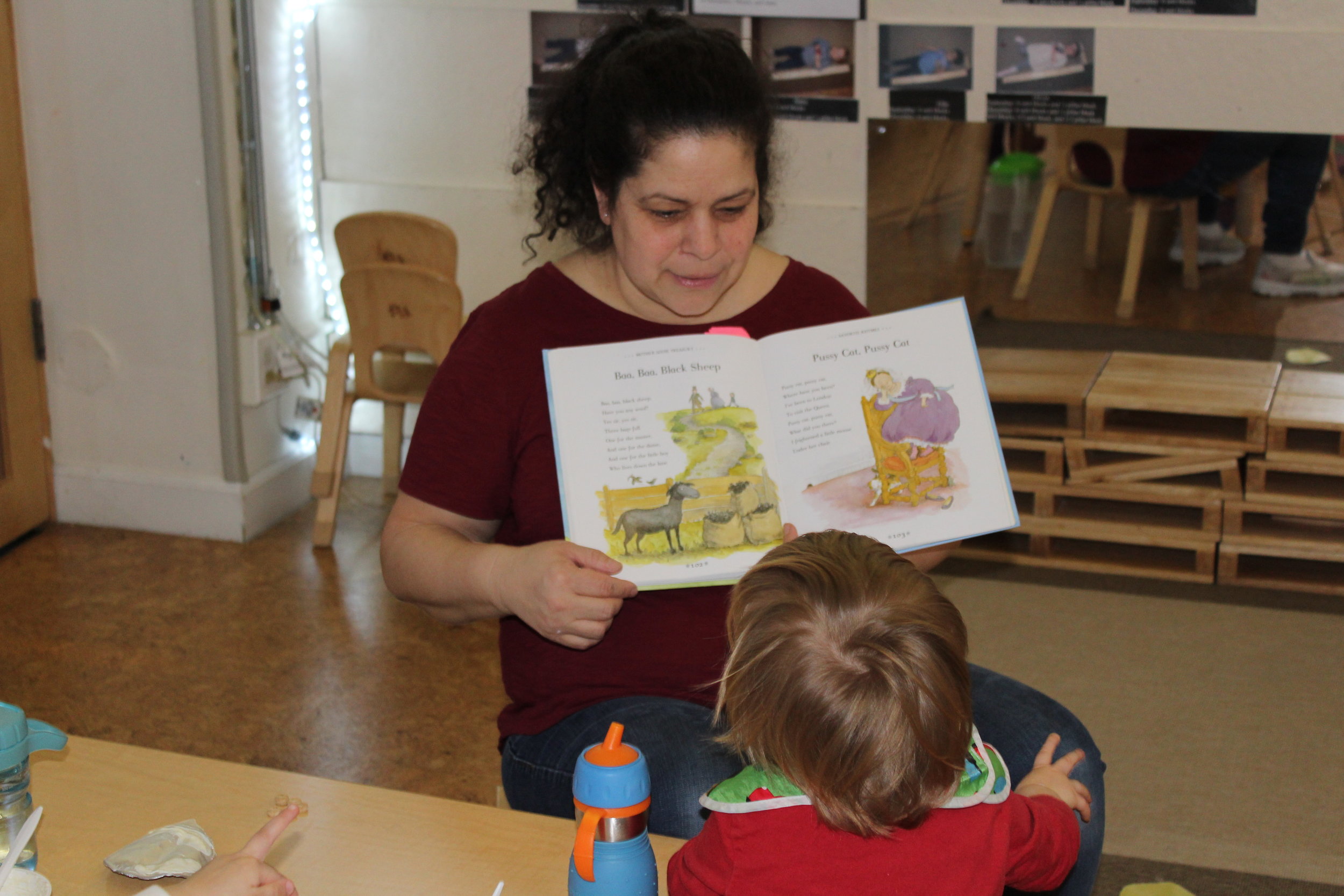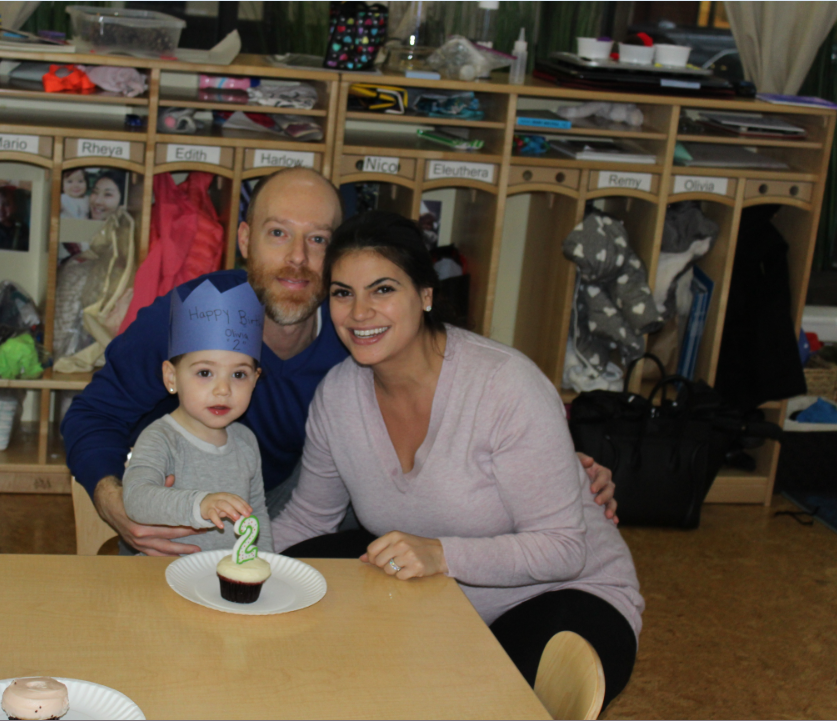As they grow, they are developing, physically, cognitively, social/emotional, and language. It's such a fantastic time not only for parents but teachers too. As a teacher, I enjoy watching them focus, concentrate on an activity, or listen carefully as the teachers are speaking.
Songs that were sung:
- Where is thumbkin
- Ring-Around -The-Rosy
- If You're Happy and You Know It, Clap your Hands......
- The Wheels On the Bus
- Old MacDonald Had a Farm (finger puppet)
- Monkeys on the Bed
- Where is Blue (color song using a glove)
- I'm a Little Tea Pot
- Mr. Sun
- ABC
- There are 7 days in the Week
- Twinkle, Twinkle Little Star
- Baa Baa Black Sheep
- Johnny is working with one hammer
- Itsy Bitsy Spider
These are some of the songs that we sang. We also read several different books. Next week we are going to read some some of the children's family books during circle time.
Art:
- The children painted on mirrors. They each chose the color and used different strokes as they painted
- "Pressed Paint" This is an art form in which different drops of paint was placed on cardstock and covered with plastic. As the children tapped, pressed, rubbed or lightly touched the plastic with their hands, they spread the color into different directions, creating a unique art piece. They observed and focused on the movement of the paint. Their puzzlement allowed them to continue exploring. They appeared intrigued in how they were able to point to each color with their hands without getting some paint on their hands. This type of sensory play promotes color recognition, imagination, fine motor skills, and is also calming for children.
Movements:
The children enjoyed passing the ball and taking turns as they pass the ball to the teacher. Physical development is tightly interwoven with the development of perception, cognition, motivation, and communication. Talking to toddlers and interacting with them on simple learning tasks improves understand and language development.
We sang songs using musical instruments. As they listened to the songs, they shook their instrument simultaneously. We also did colors using colorful scarfs. We enunciated them in English then in Spanish.
Manipulative:
Using a strainer and pipe cleaners, is excellent for the fine motor skills, concentration and focus.
Science:
Lava Lamp Experiment:
Materials needed for this experiment:
- Clear Soda Bottle
- Funnel
- Oil
- Water
- Watercolor
- Alka-Seltzer
The children helped the teacher pour the oil and watercolor. As the teacher added the last ingredient, alka-seltzer, immediately some bubbles began to emerge to the surface. We all observed with curiosity and amazement. The teacher asked the children to observe and to articulate what they see. Some said water, purple (watercolor), oil, and one child expressed they see two bubbles. Unfortunately, our experiment did not go according to plan. The tiny bubbles subsided quickly. After researching the reason why the experiment did not work, we will try the test again on Monday and add the correct amount of water and oil. We will succeed!
Dramatic play is an ongoing engaging activity in the classroom. It is a time when the children pretend to be someone or something different from themselves. Dramatic play is defined as a type of play where children accept and assign roles, and then act them out. Remy and Edith were going to take the subway. They all played cooperatively and it is a time when they break through the walls of reality and pretend and dramatize situations and actions to go along with the roles they have chosen to play.
Teacher: "Where are you going?"
Remy: "To take the A train!"
Symbolic or pretend play, are other names for dramatic play, is one of the ways that young children come to understand the world around them. As they interact with different people in their lives, they build the understanding that they will need to engage in pretend play. They use symbols and recount events or actions they have observed and experienced. Using symbols involves the ability to use one thing to represent or stand for something else. For example, children represent an object (a person or living being when they pretend to be a dog or a mother) or an event (when they crawl in a cardboard box and pretend to be driving a car).
Highlights of the week:
Counting different or the same items is always one of our fun activities. Today we counted ten different pieces. As we count the total number of items, we will be showing the number in written form on an erasable board. We are gradually integrating this into our lessons. We have sung the ABC song in repetition, now we are showing the first letter of their names. The children are excited to see and repeat the alphabet letters. They are learning the first letter of their names and their peers, as they repeat the letters during circle or transition time.
Art:
Sensory:
Exploring oobleck and play dough
Constructive play focuses the minds of young children as they engage with the materials in the classroom. Young children have a natural desire to find out things for themselves, and children acquire knowledge through active play. Rheya has developed and moved from functional play, where she used materials in simple, repetitive, and exploratory ways, to constructive play, with purposeful activities that result in creations.
“It’s airplane!”
Gym:
Storytime:
We celebrated Olivia's Birthday

